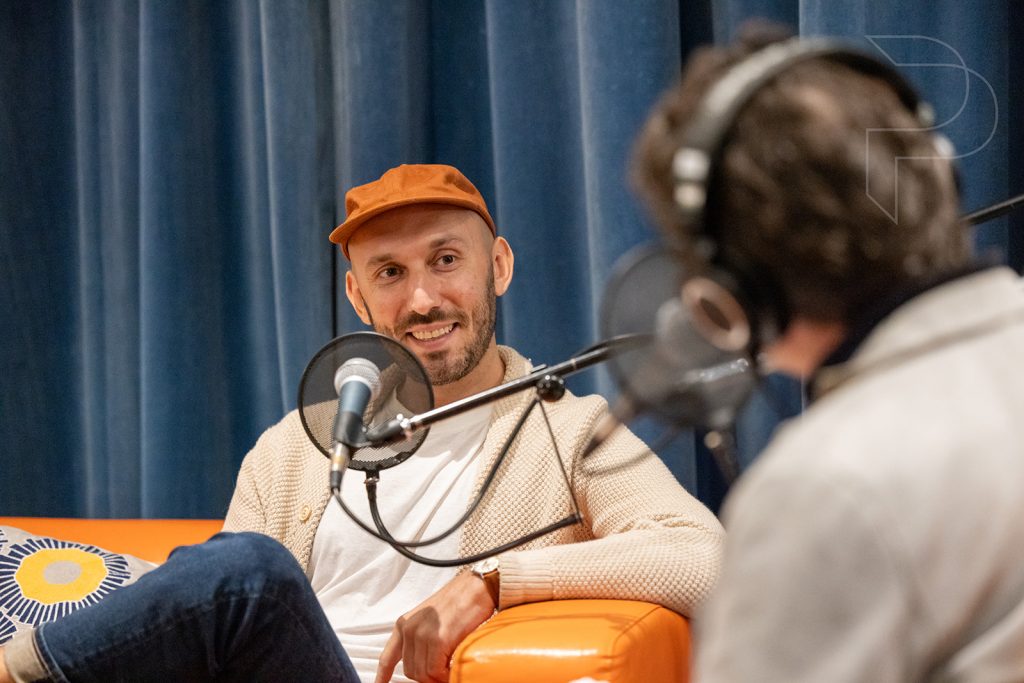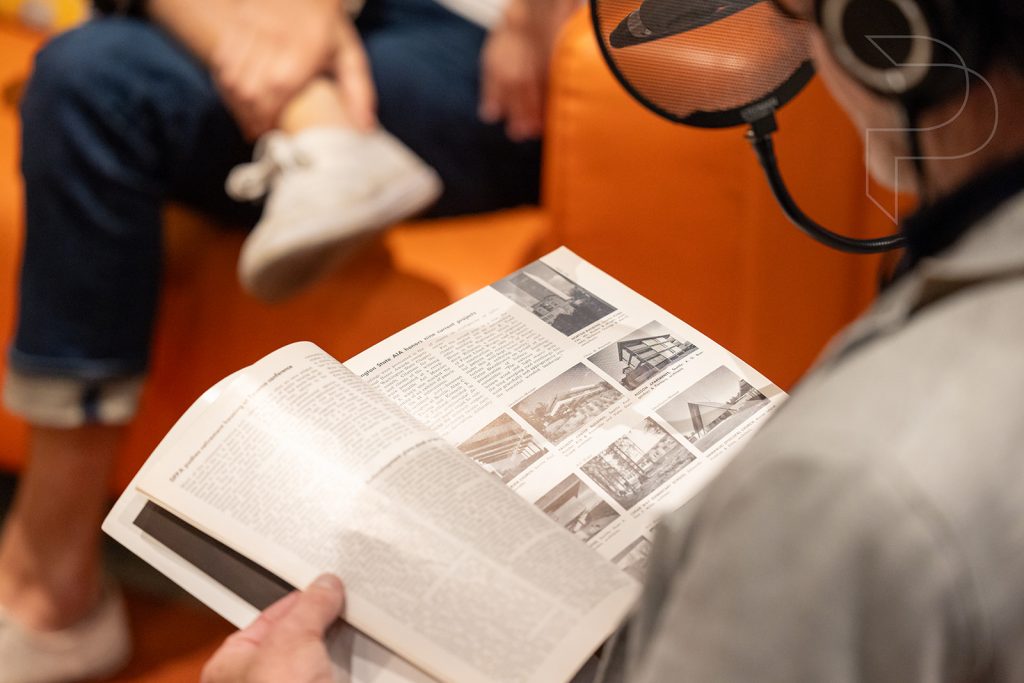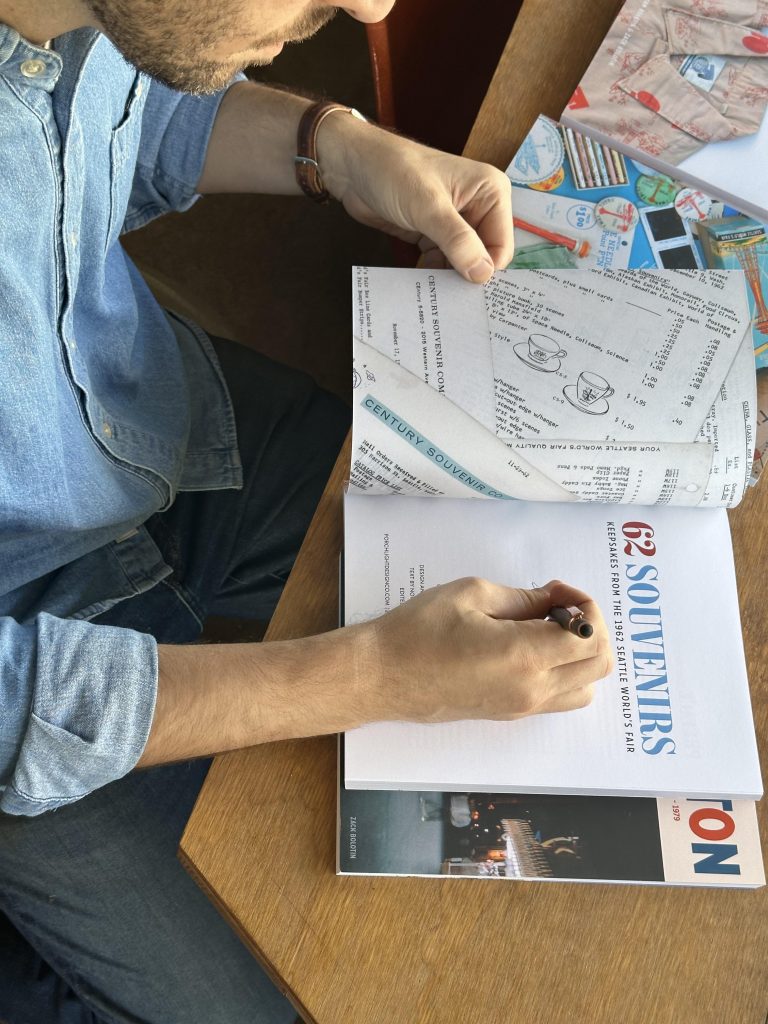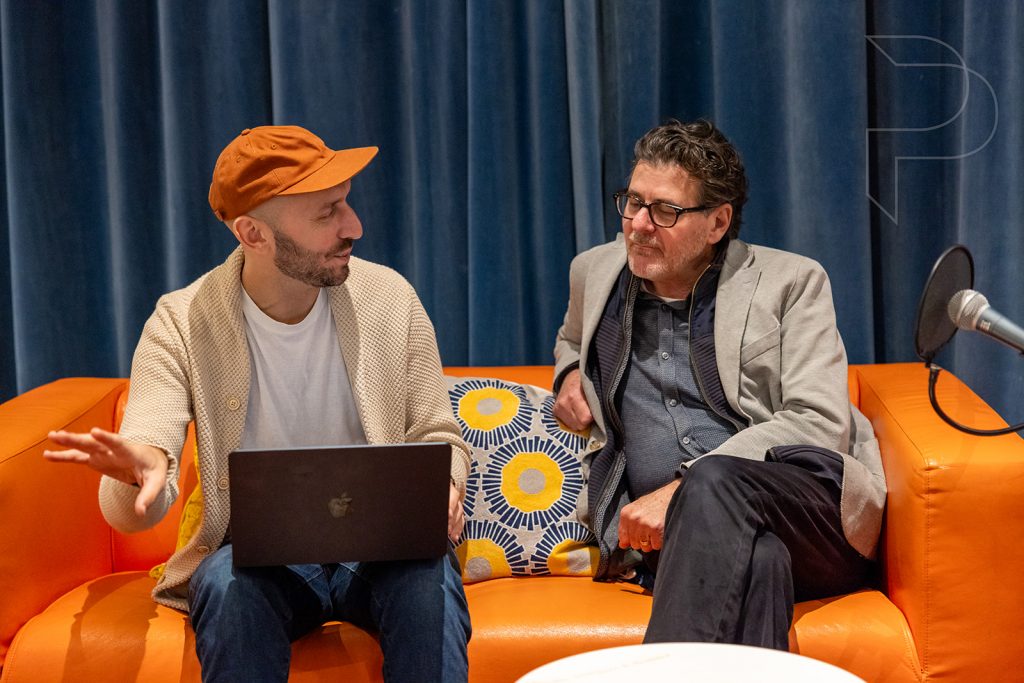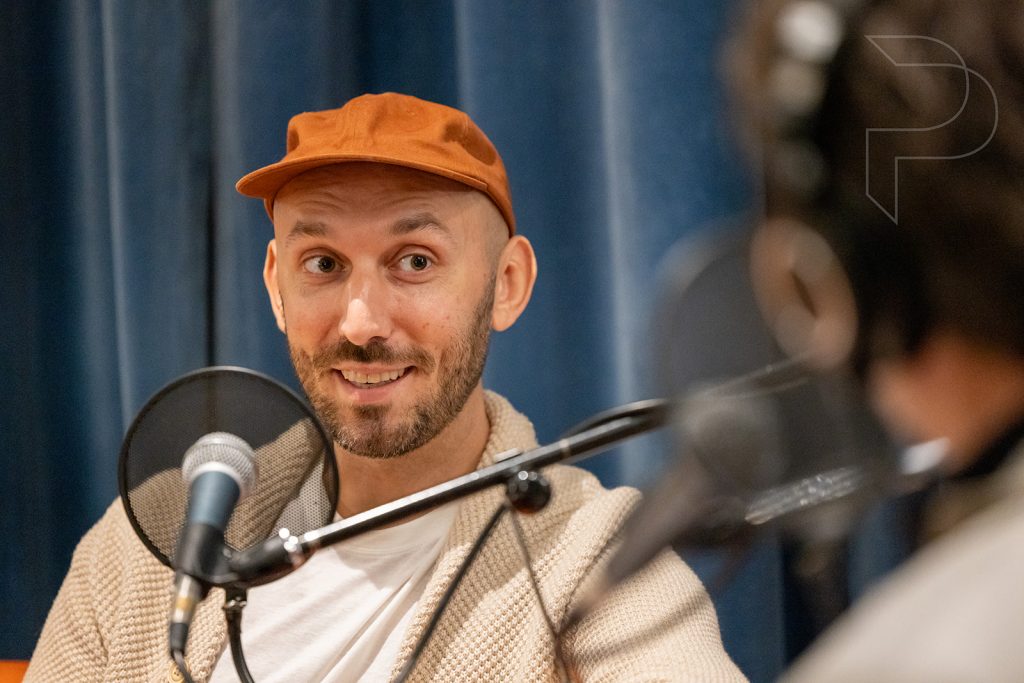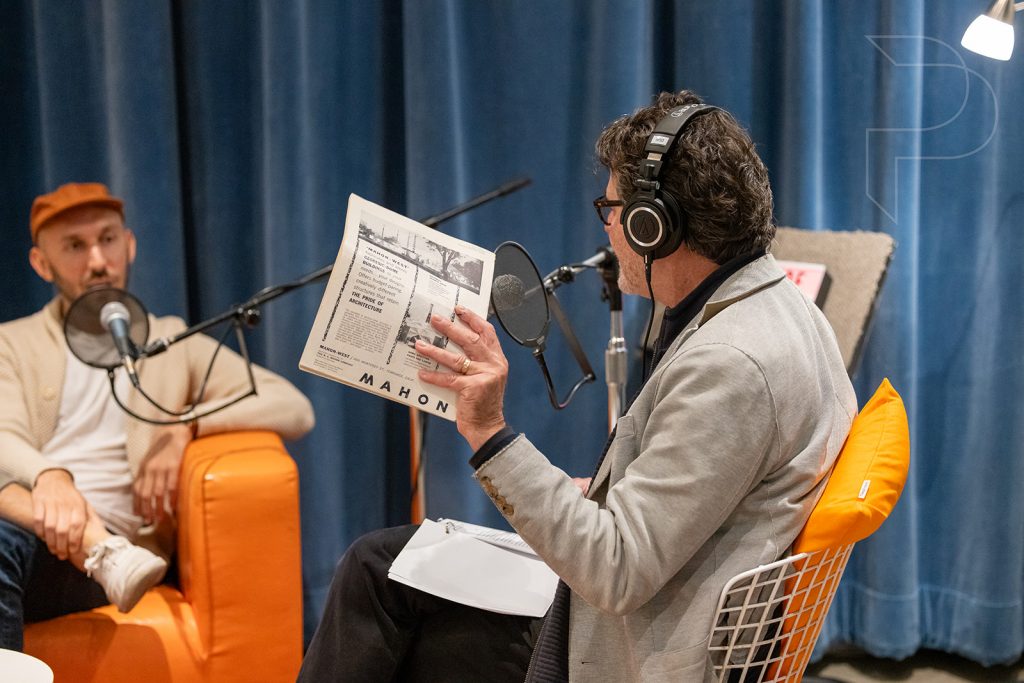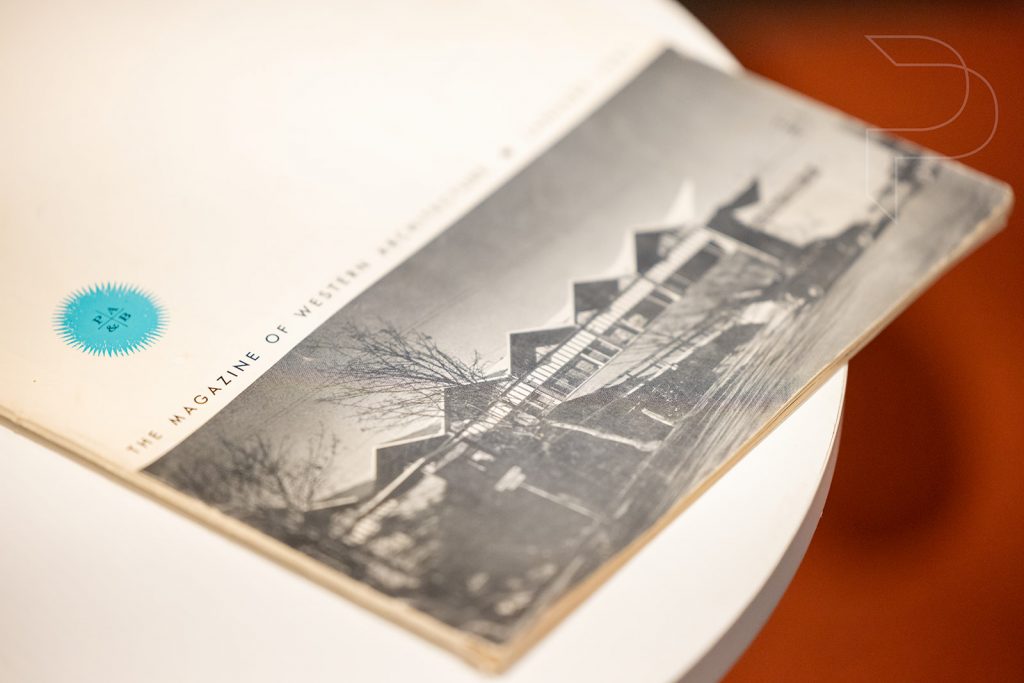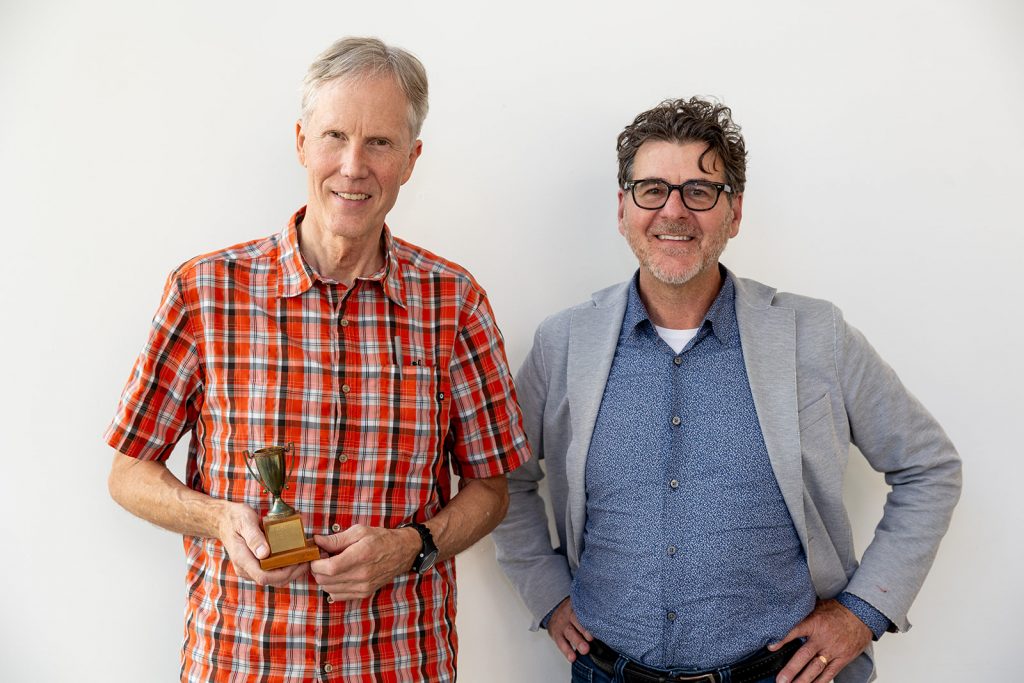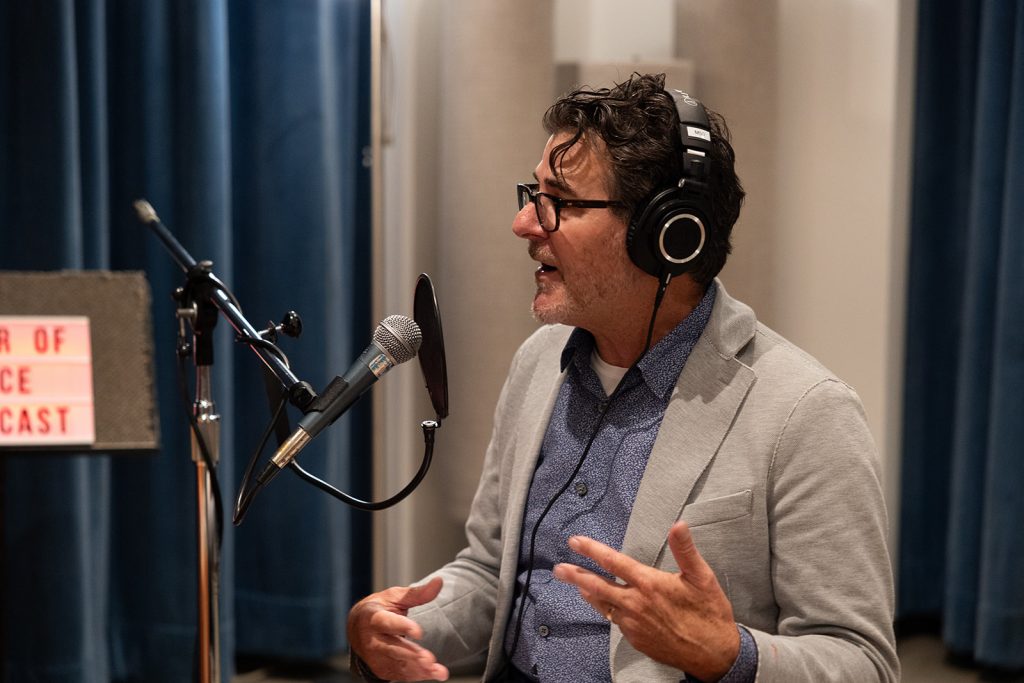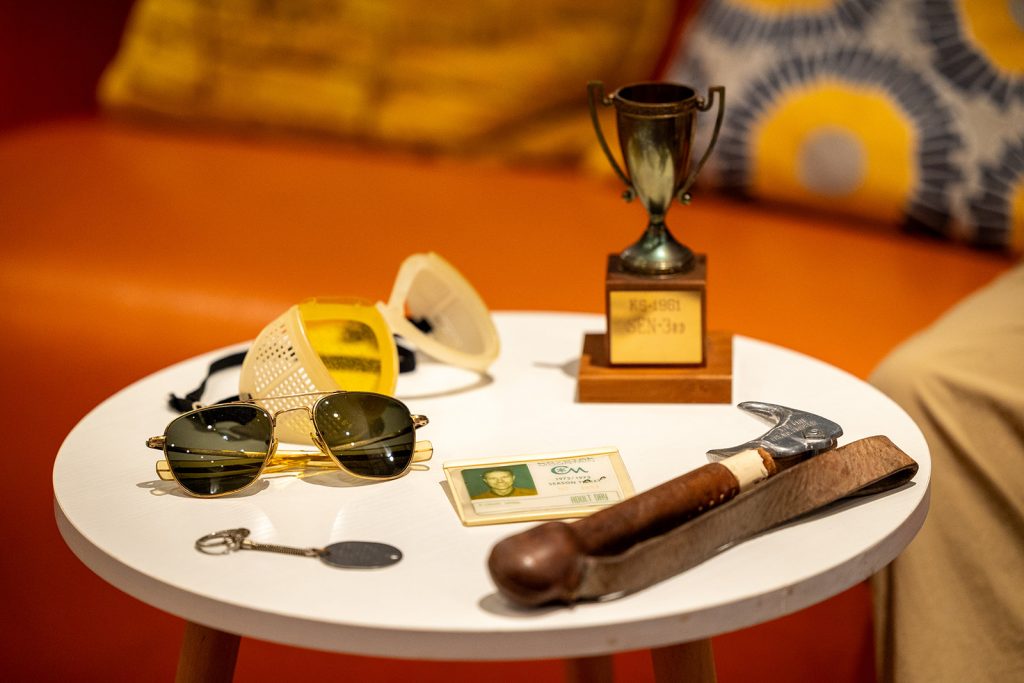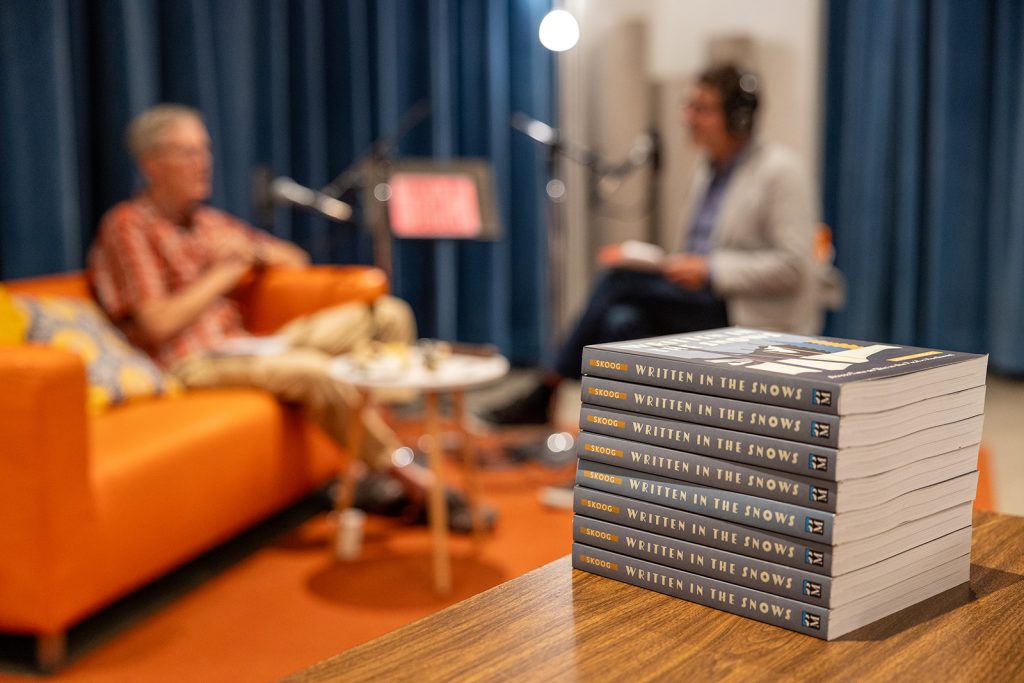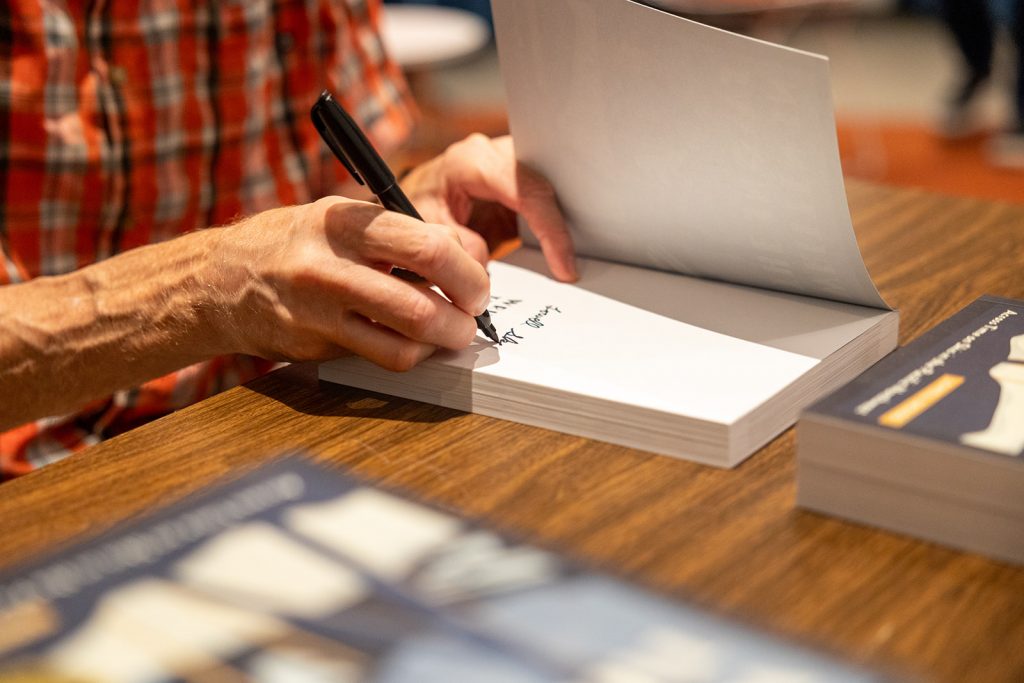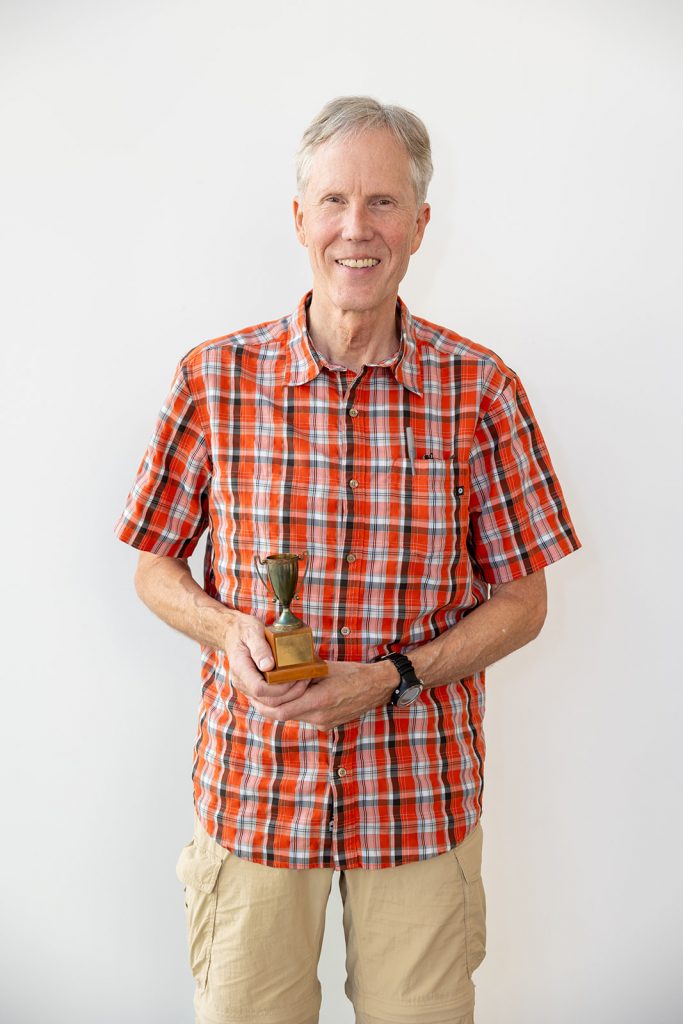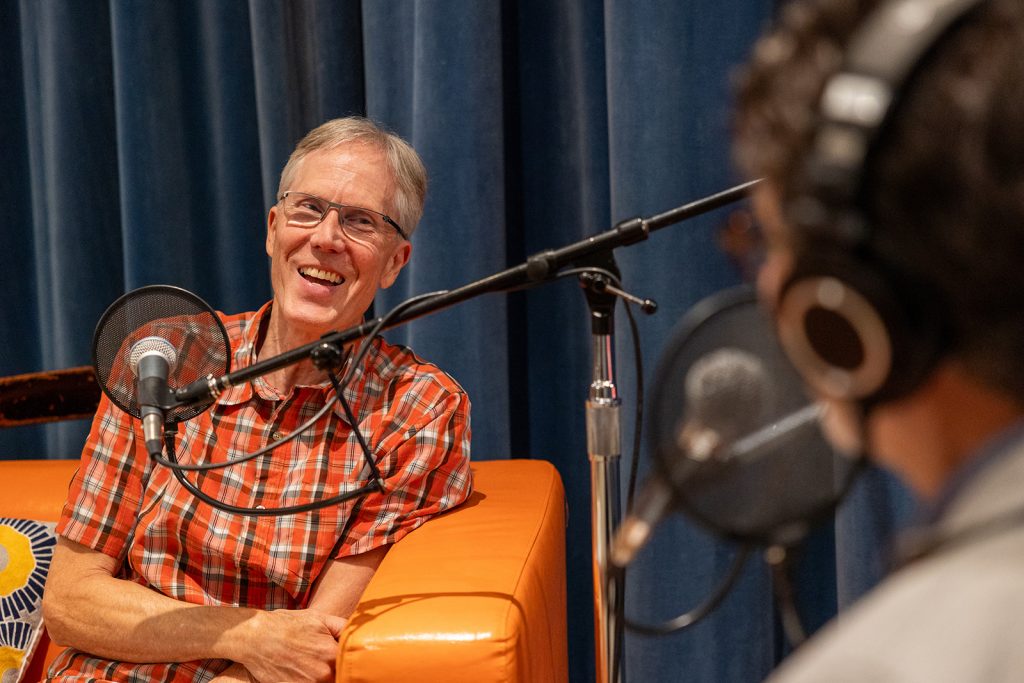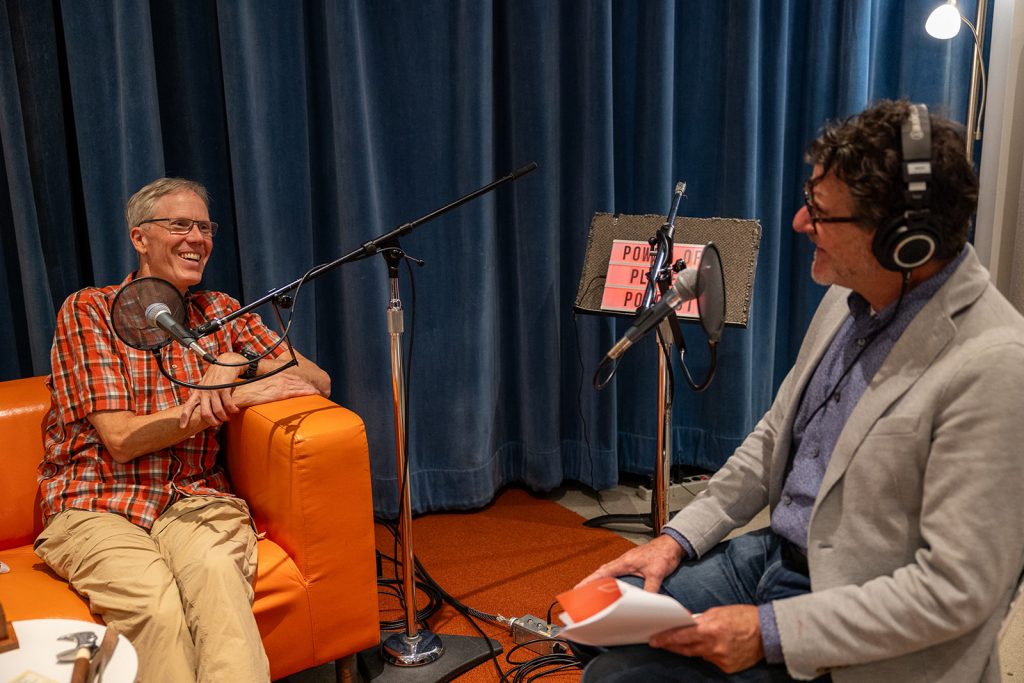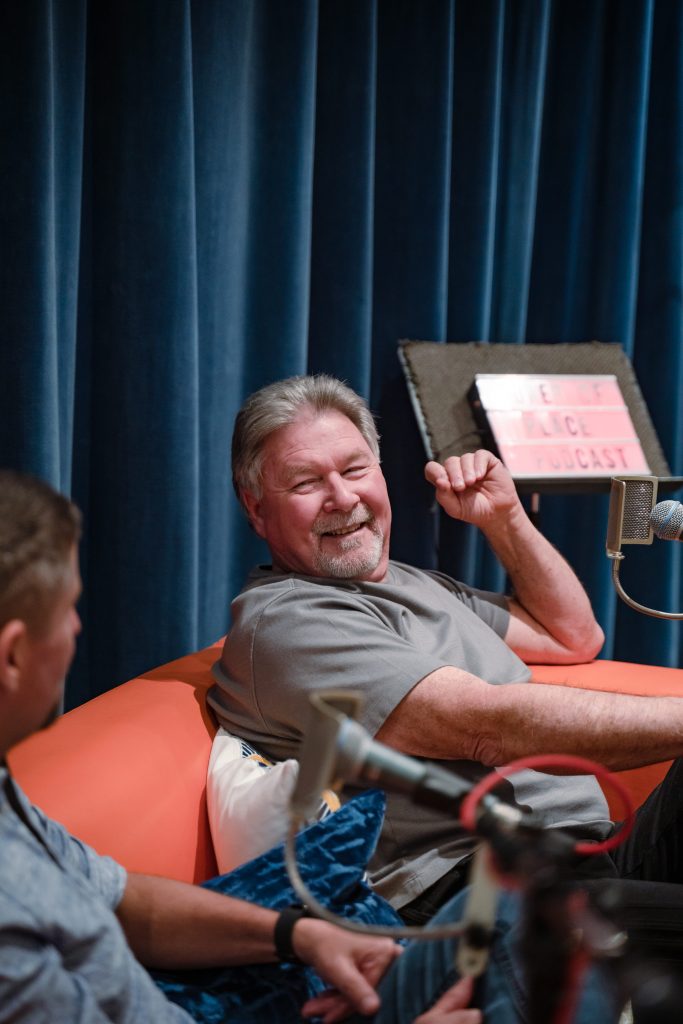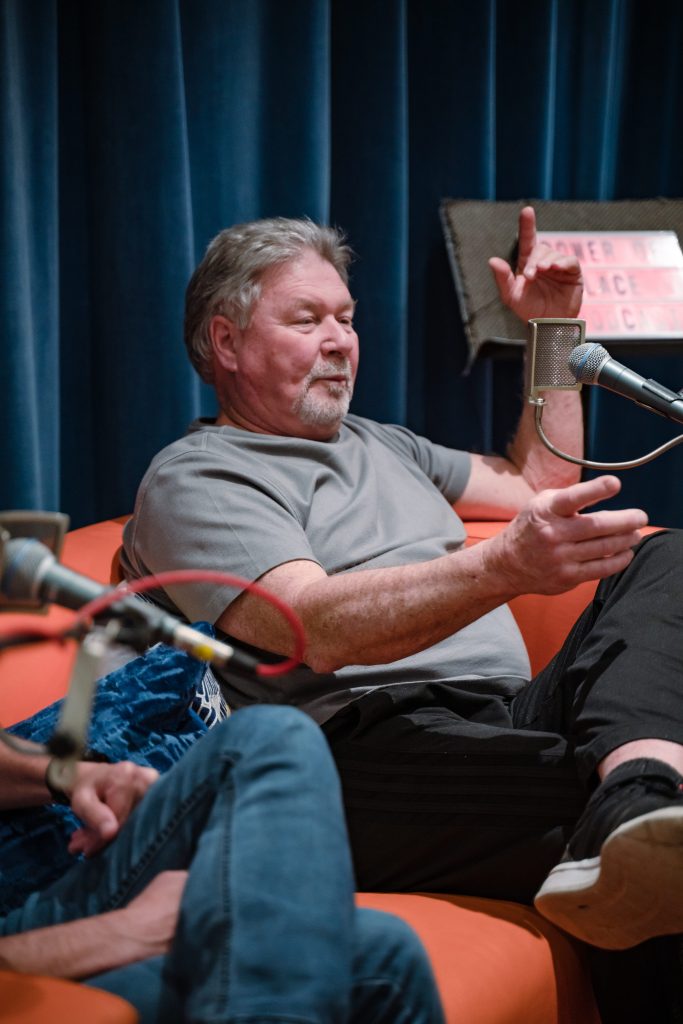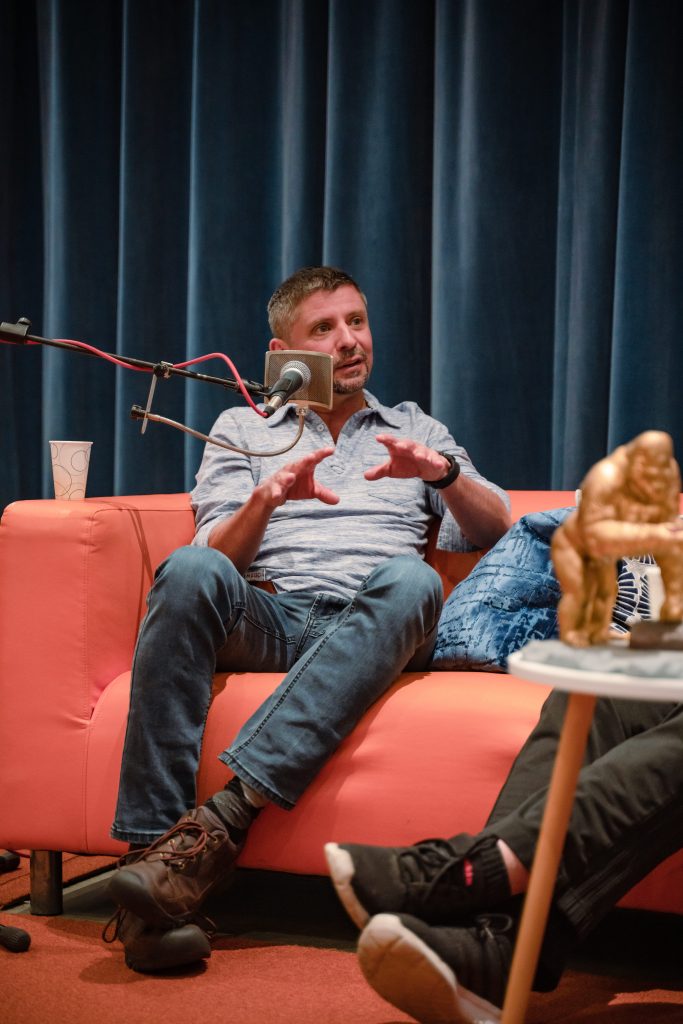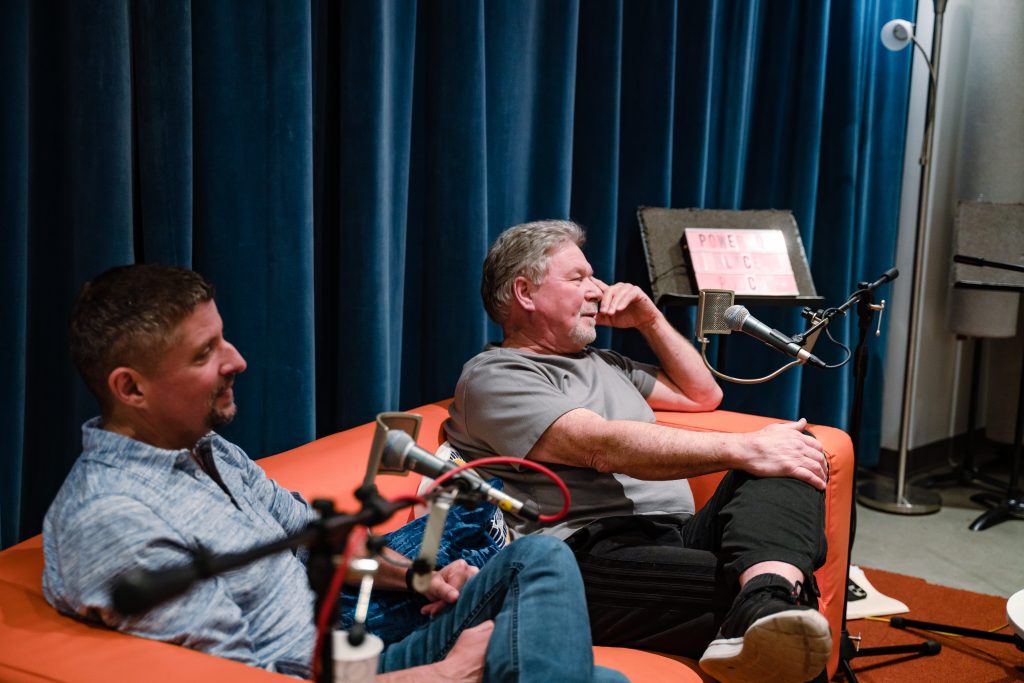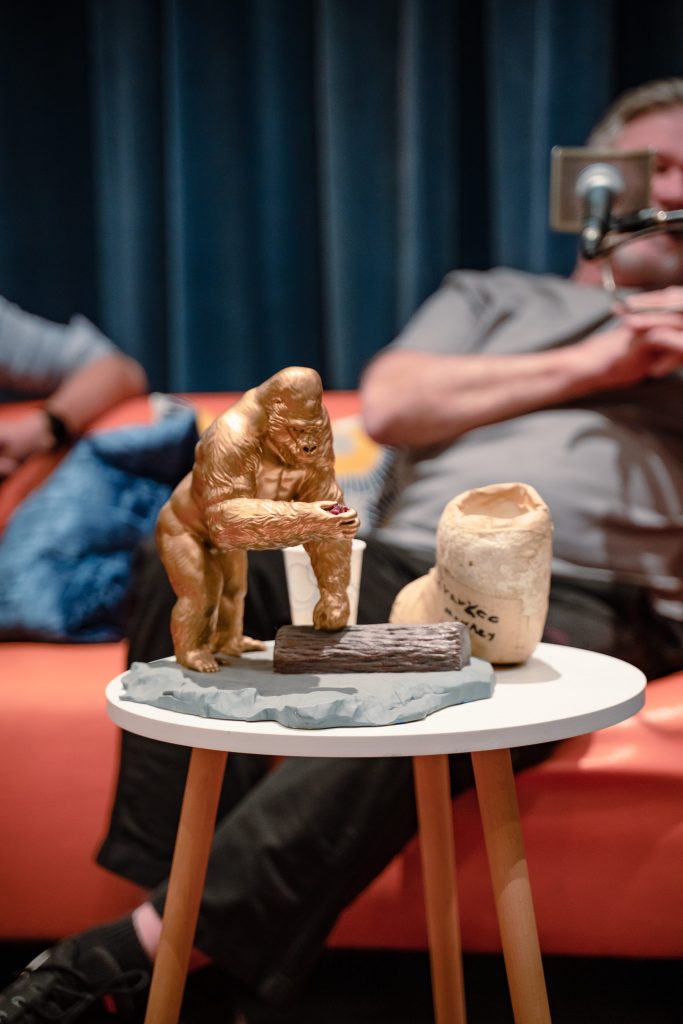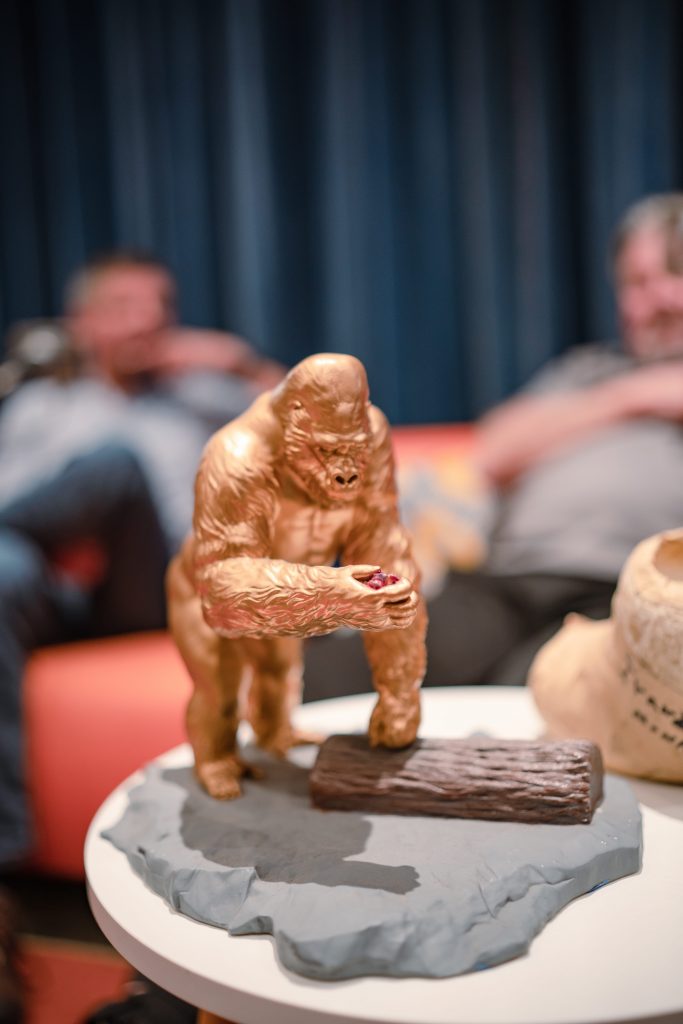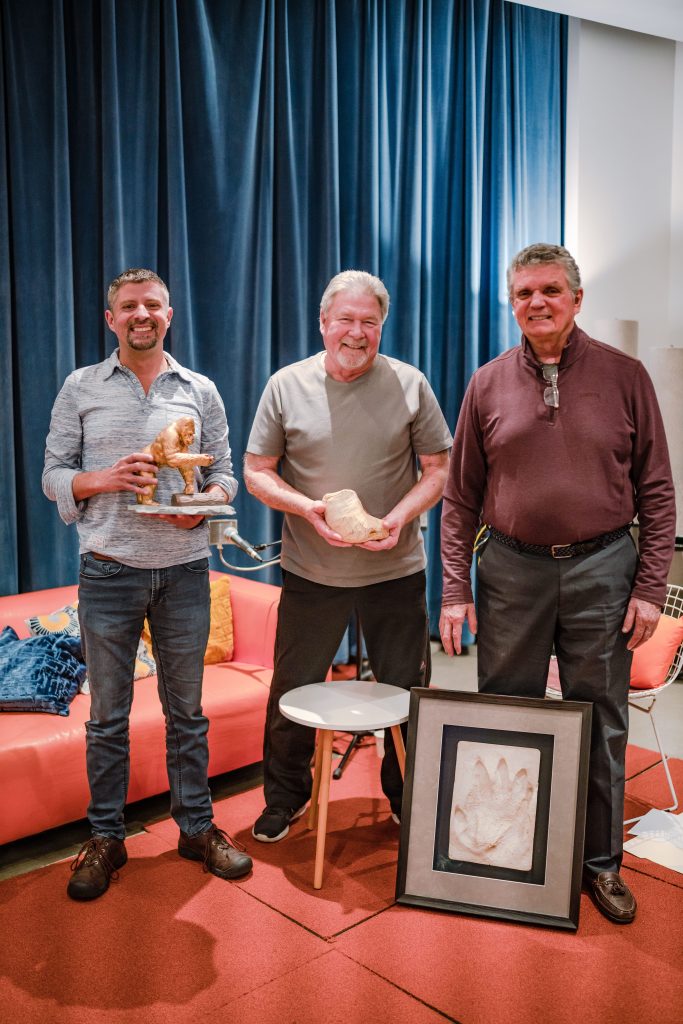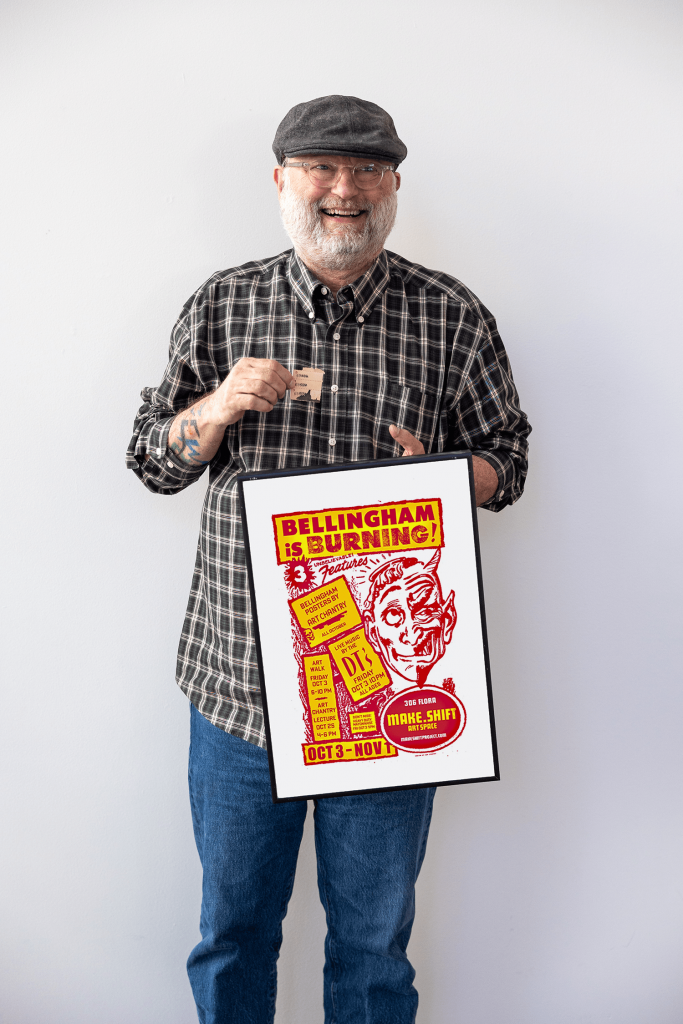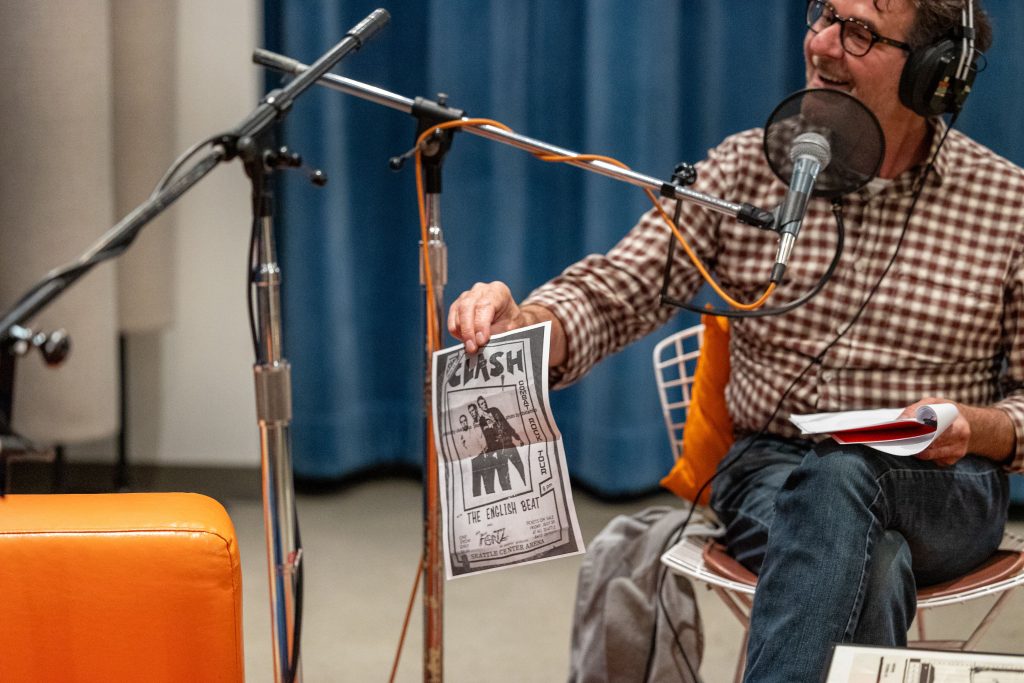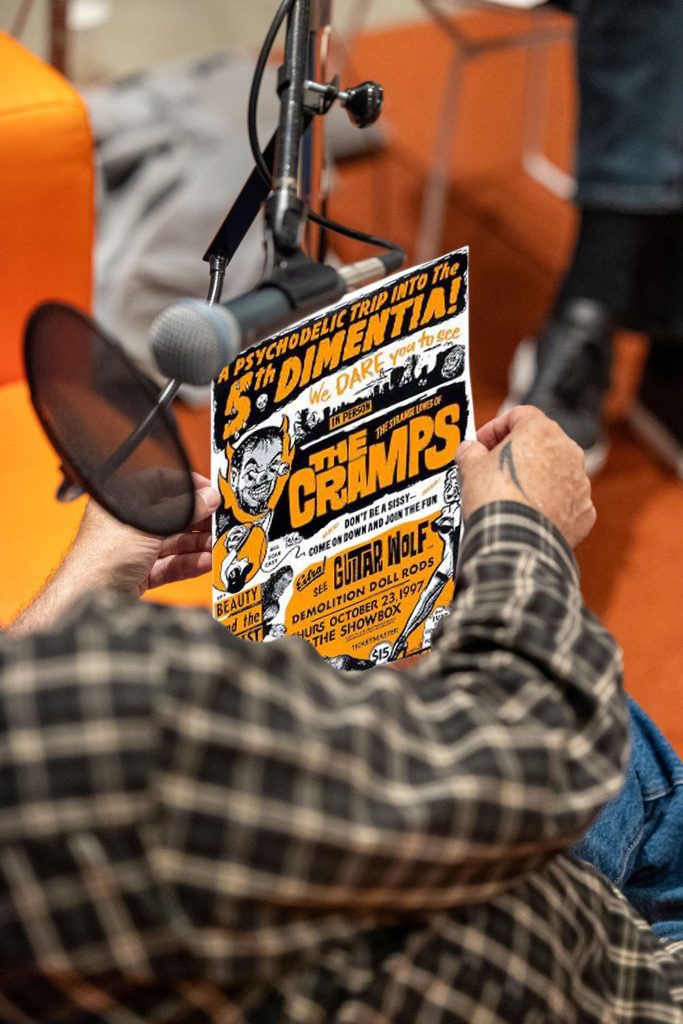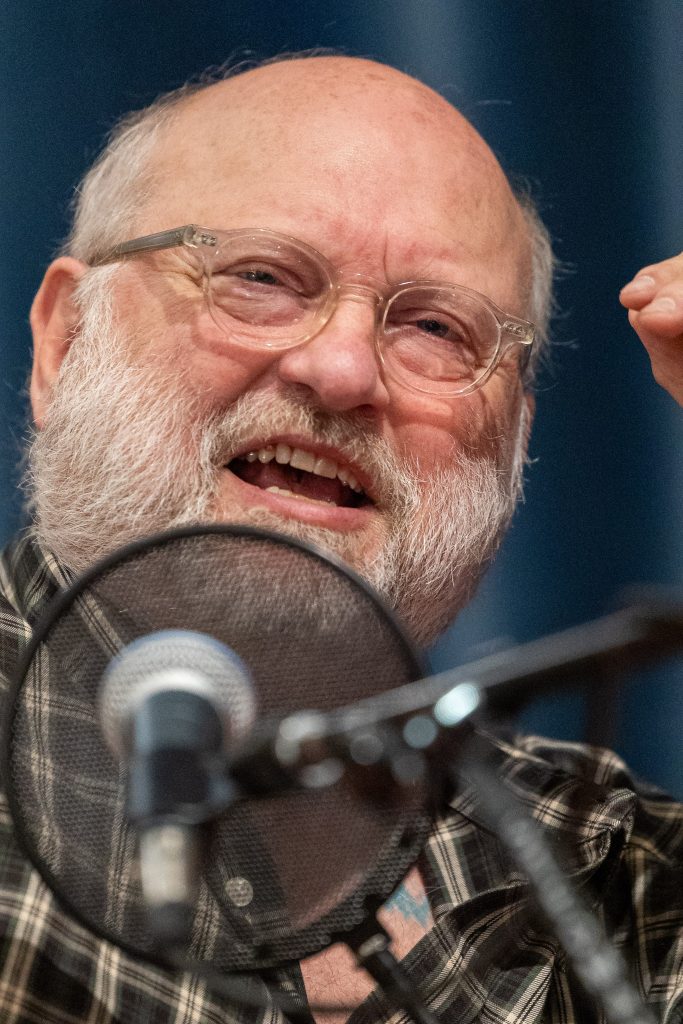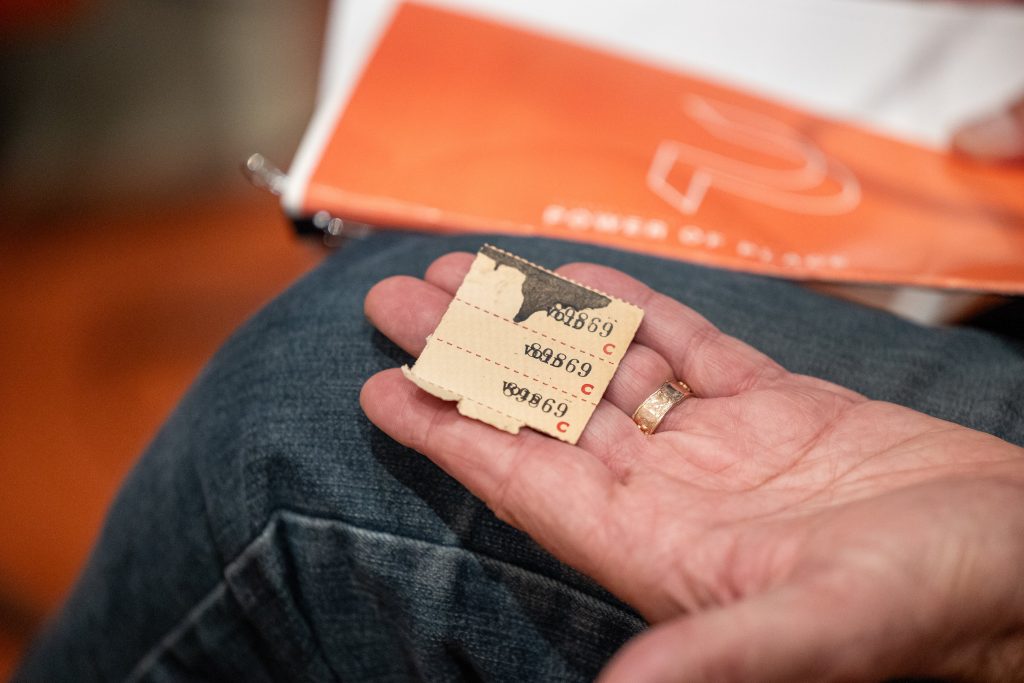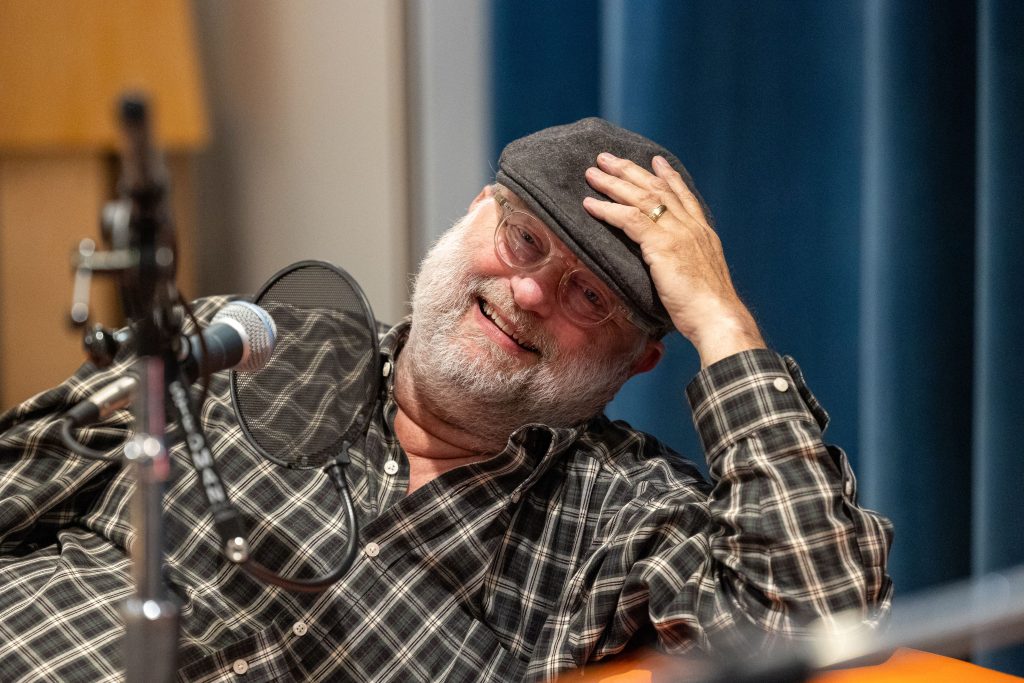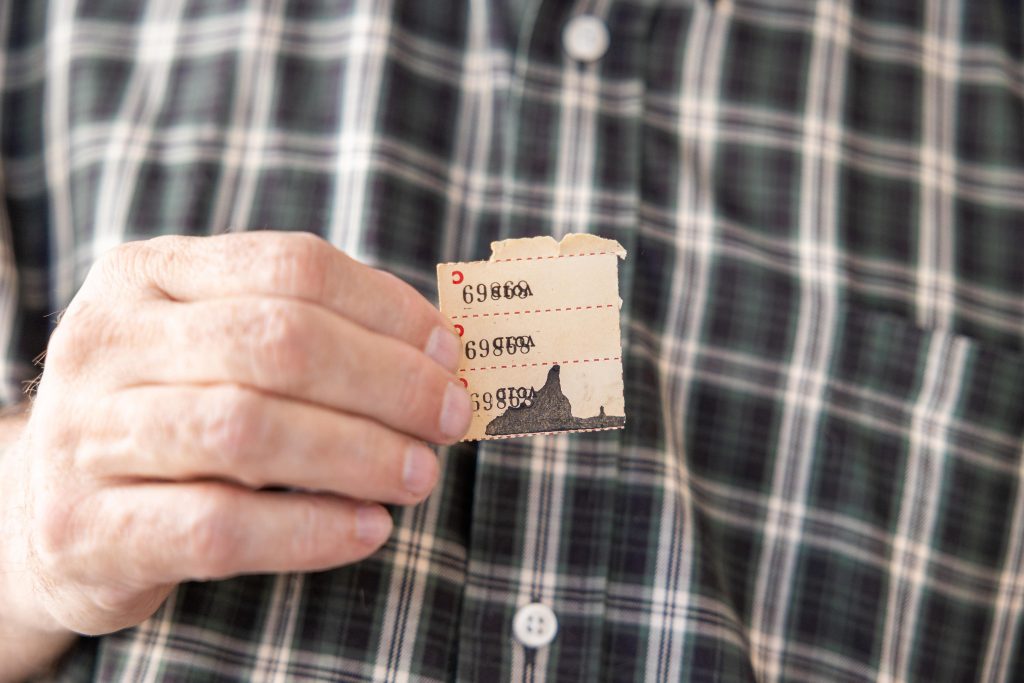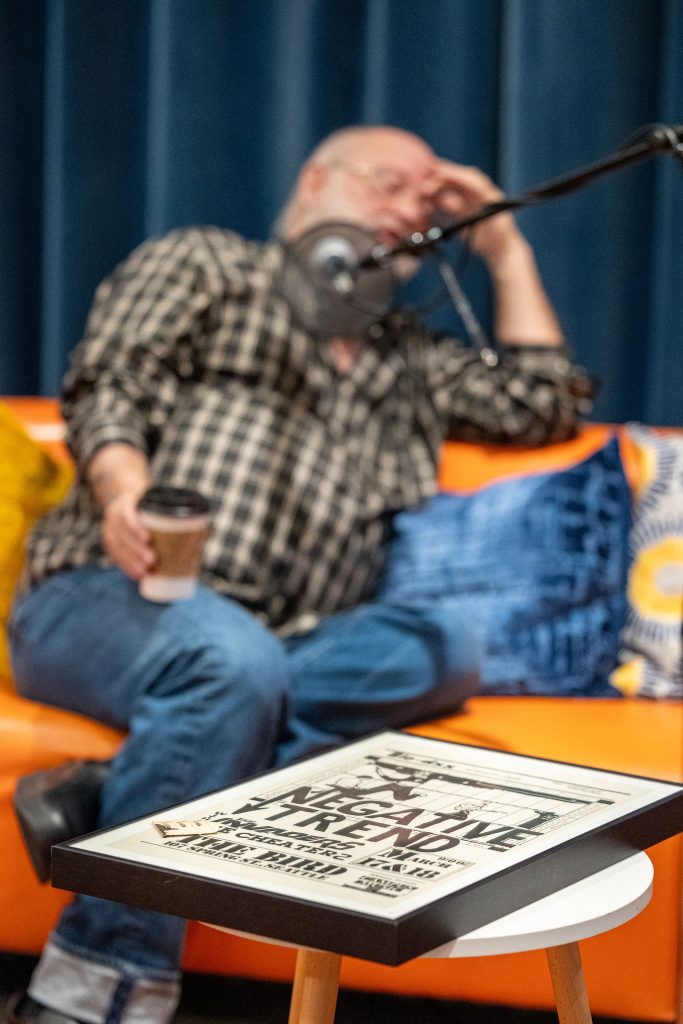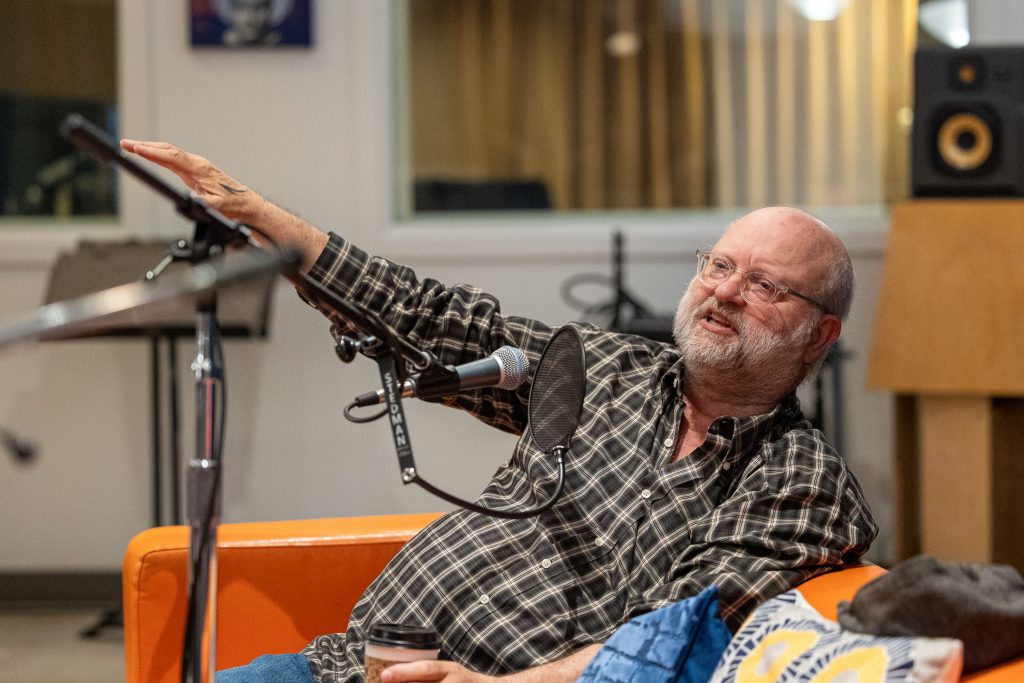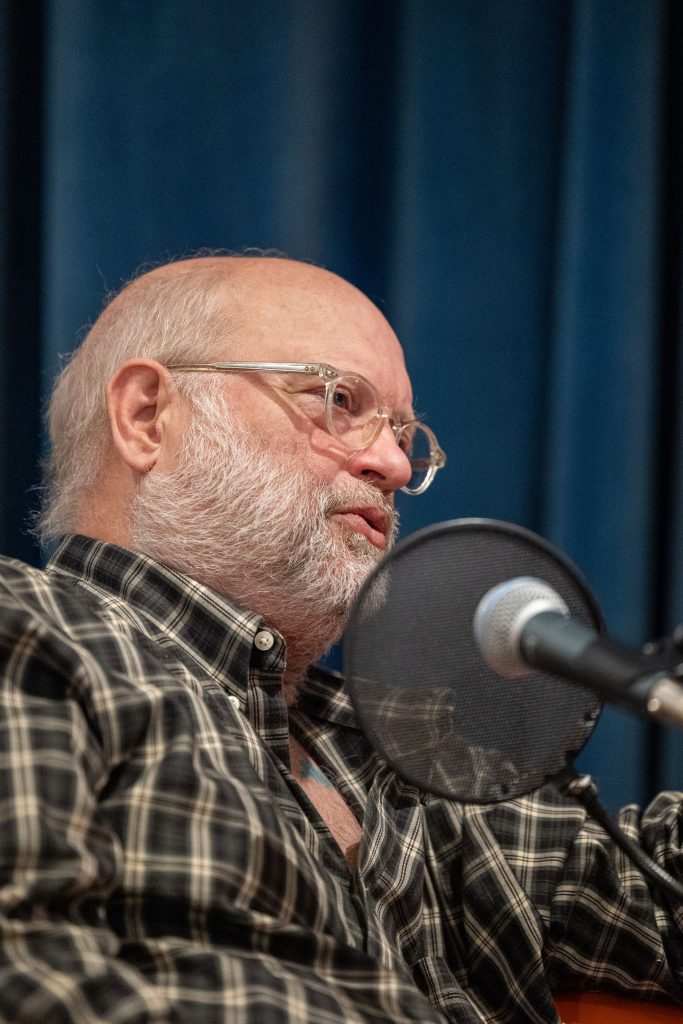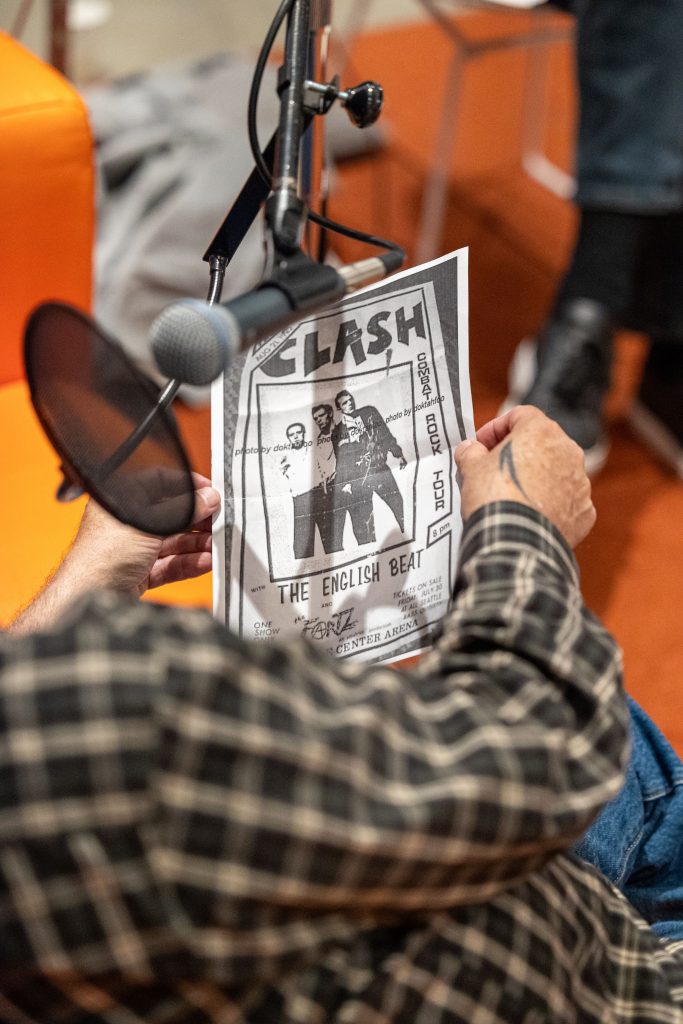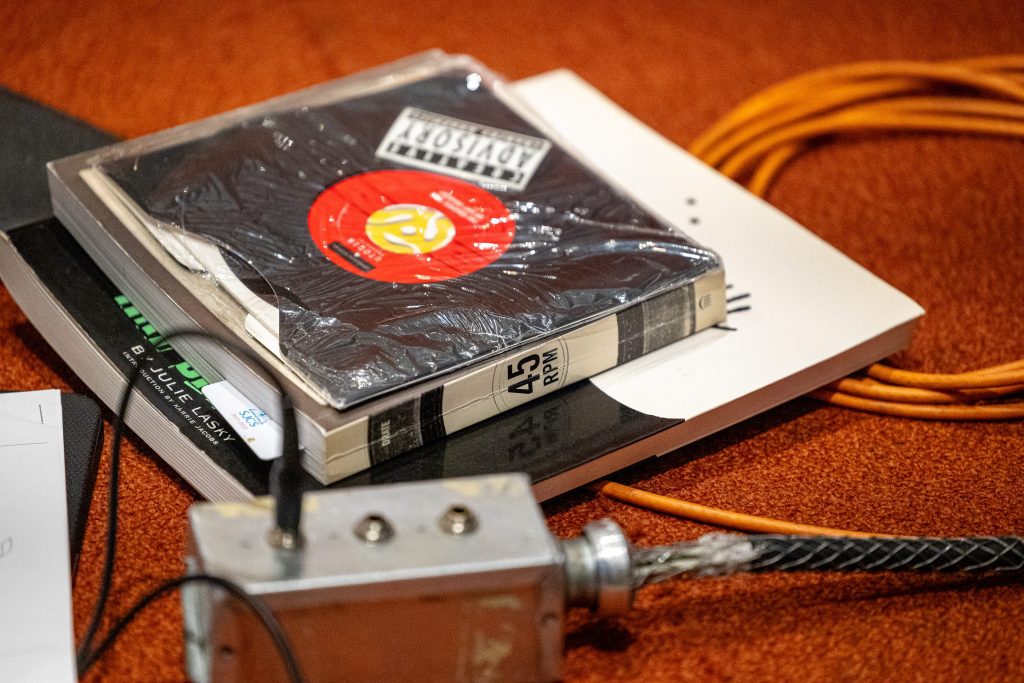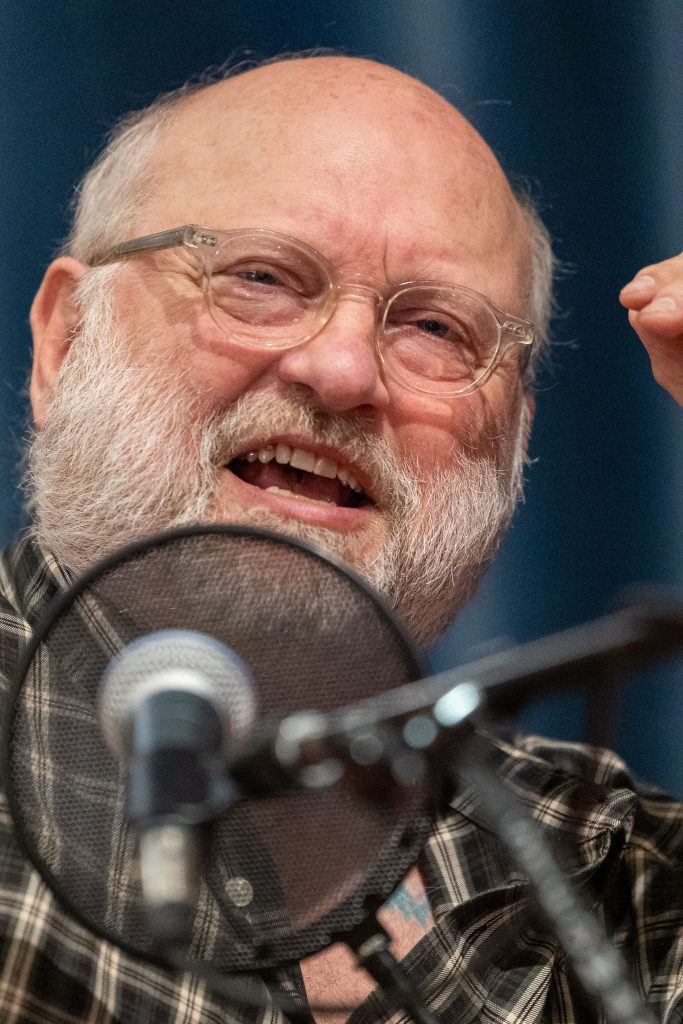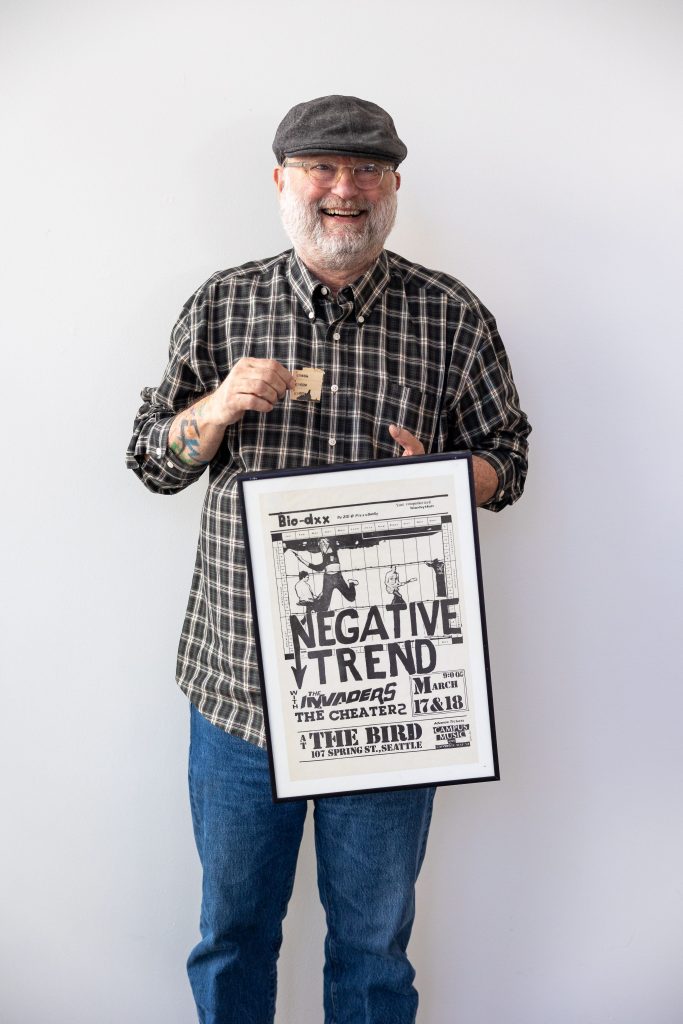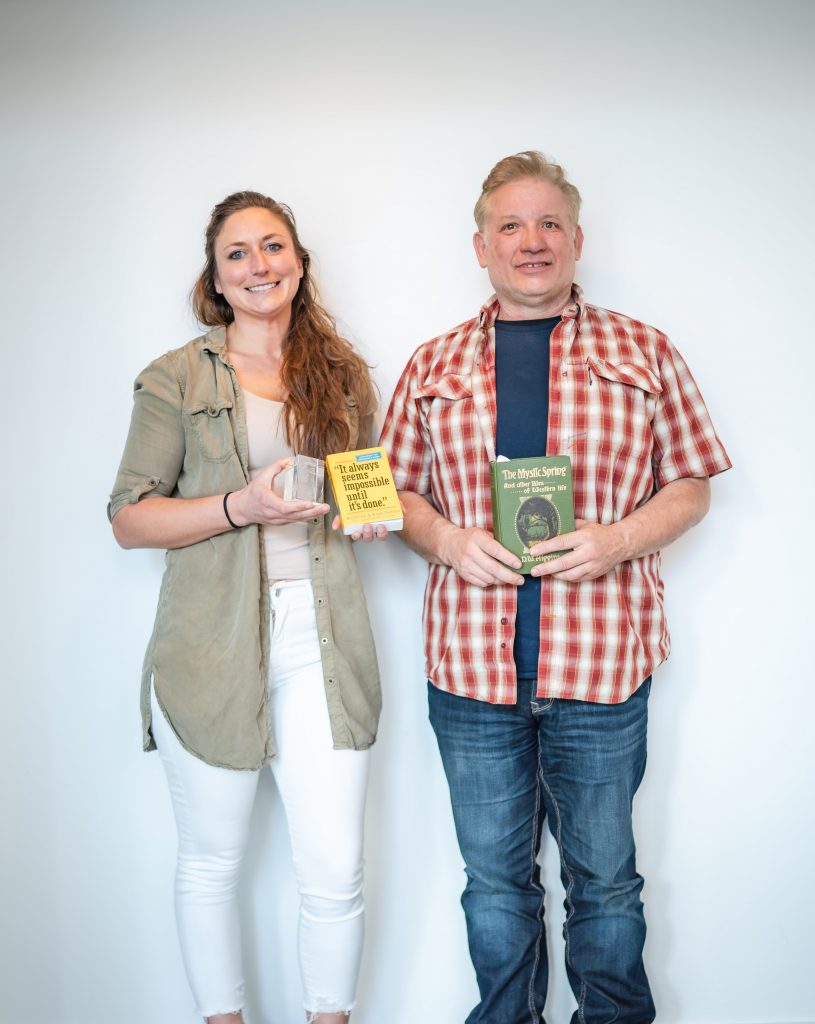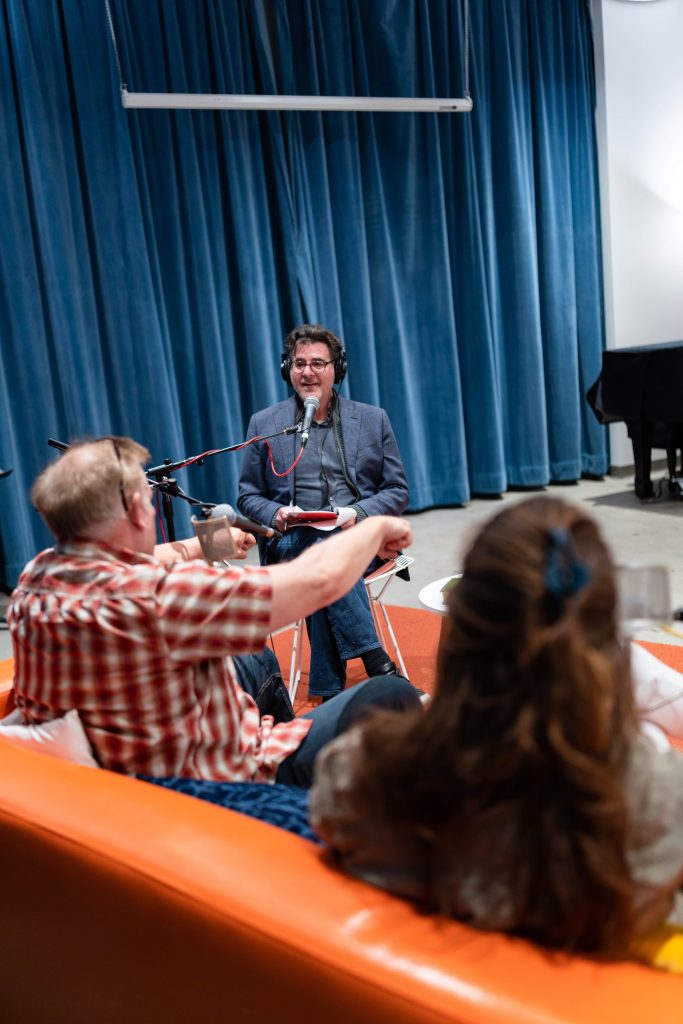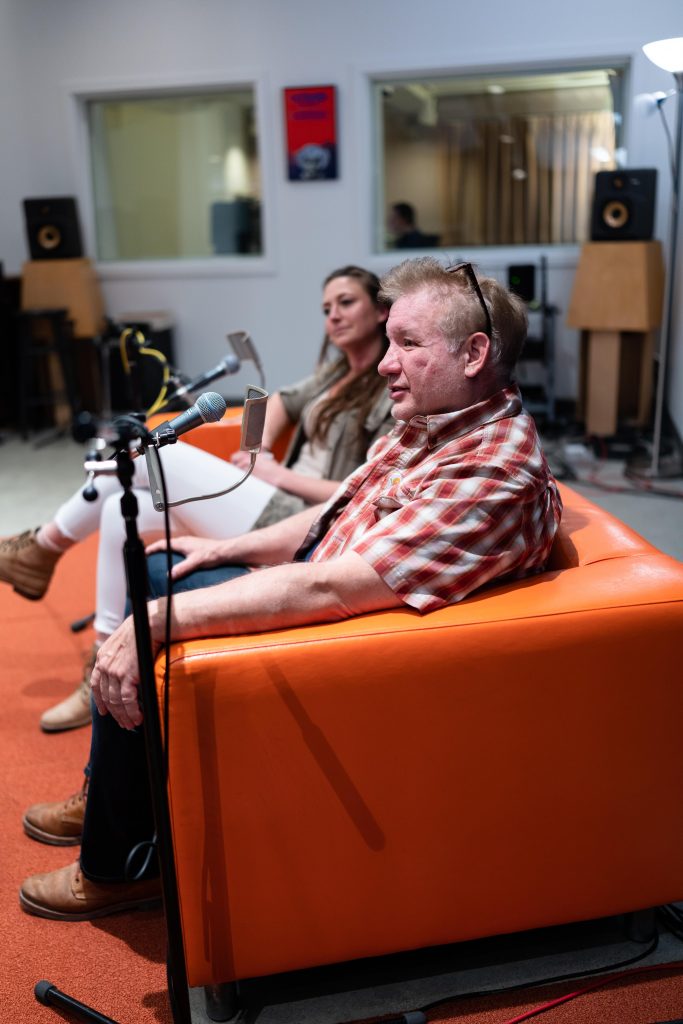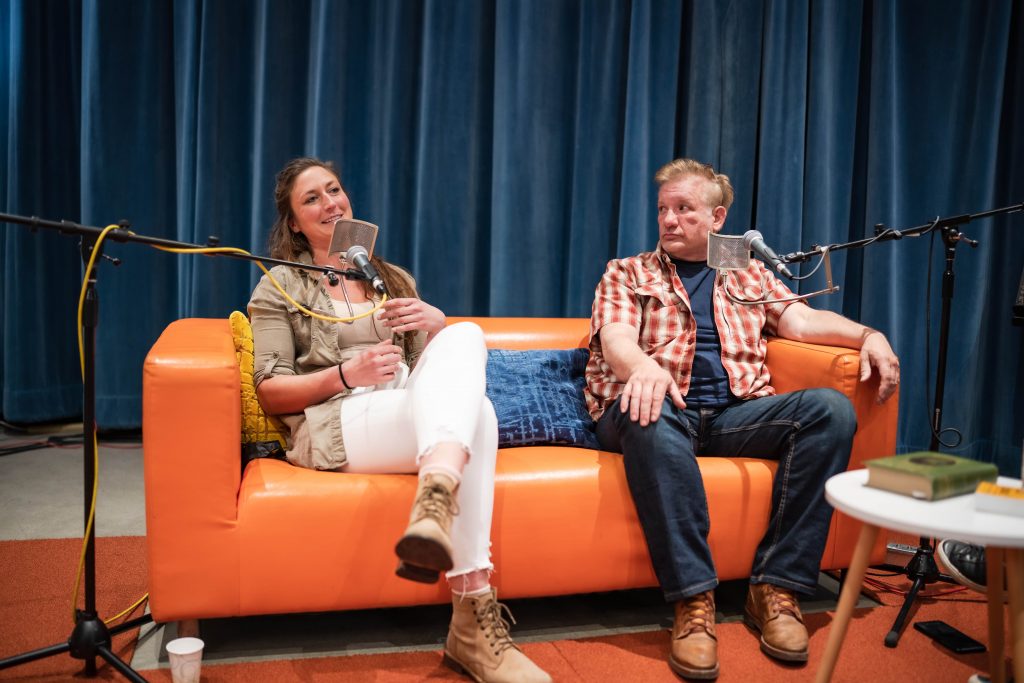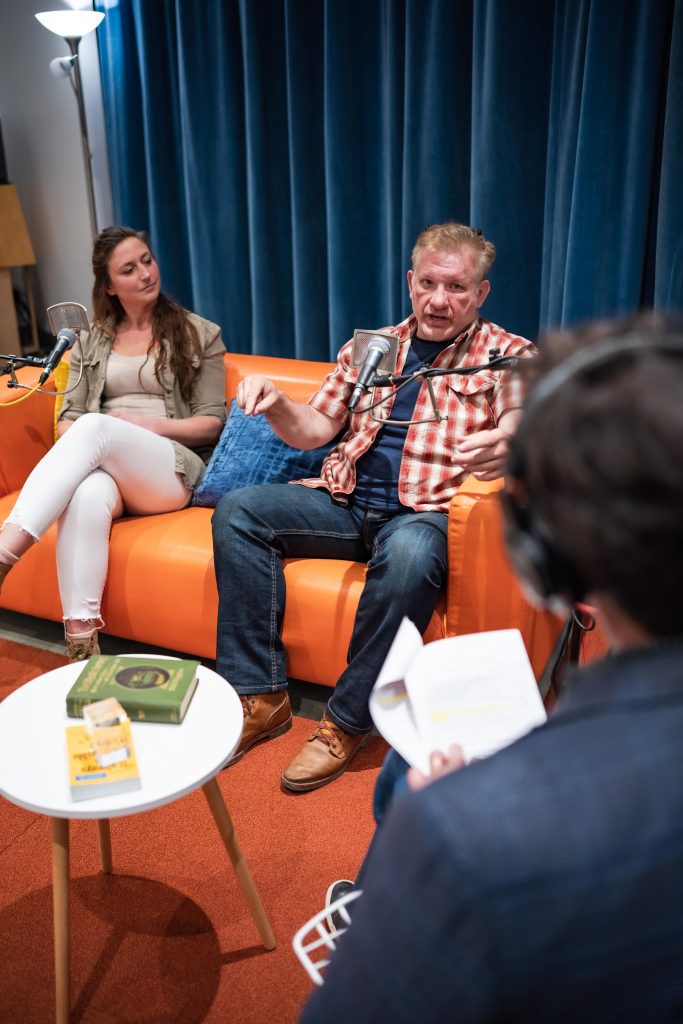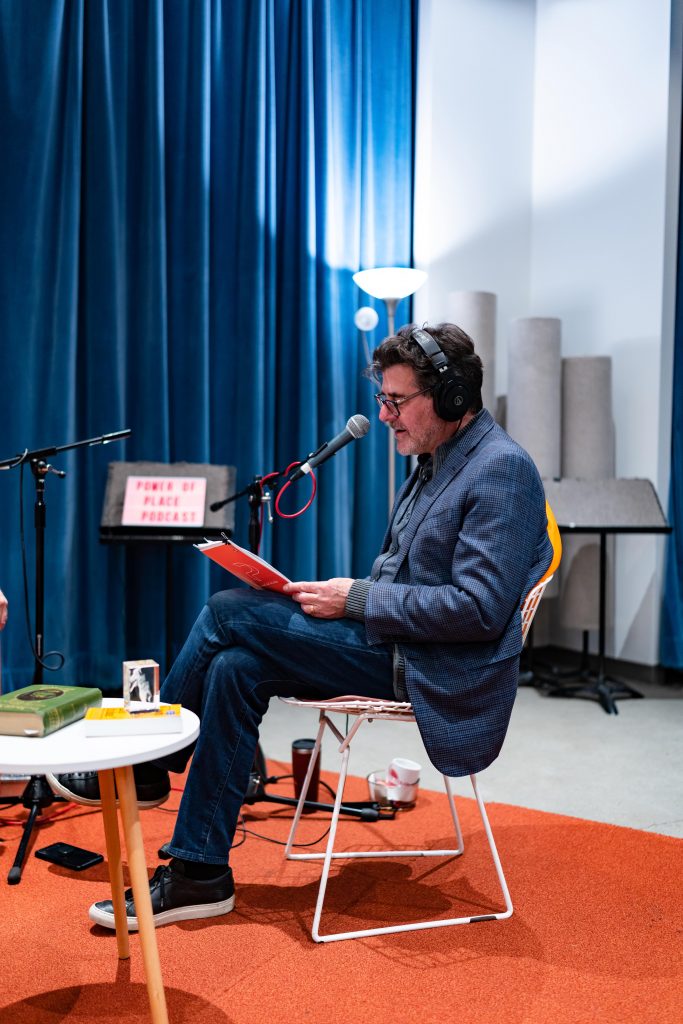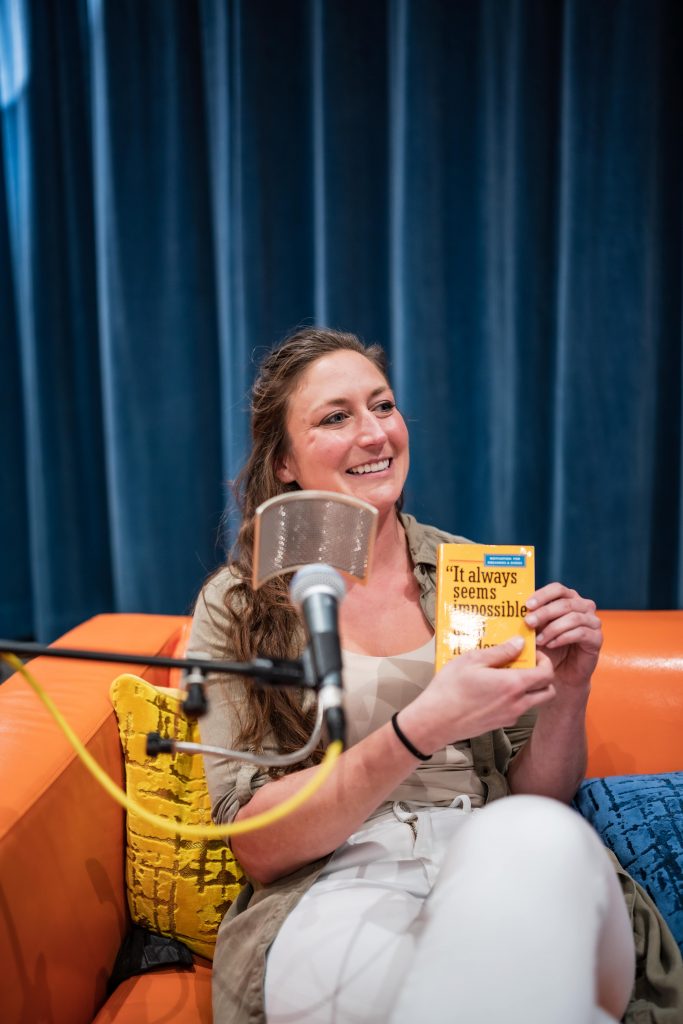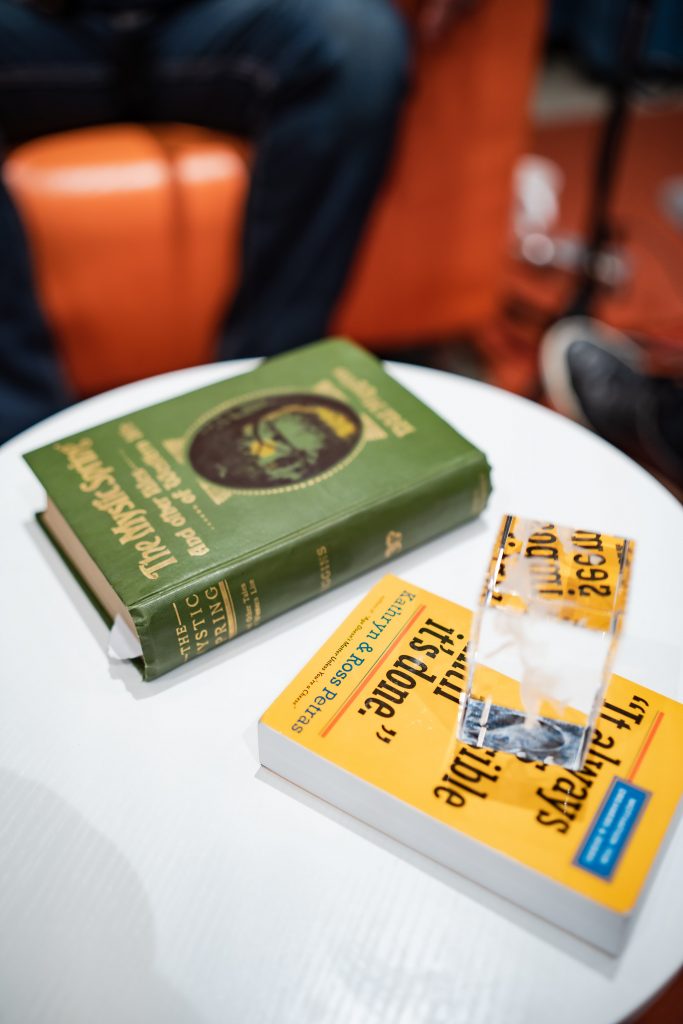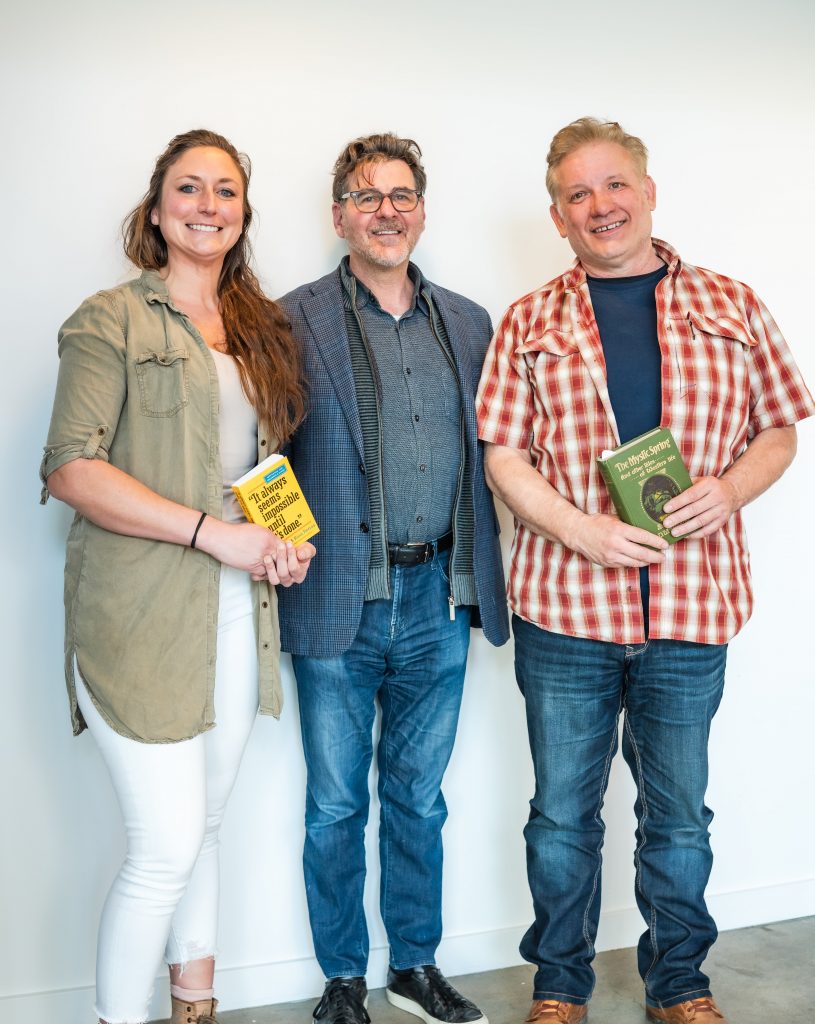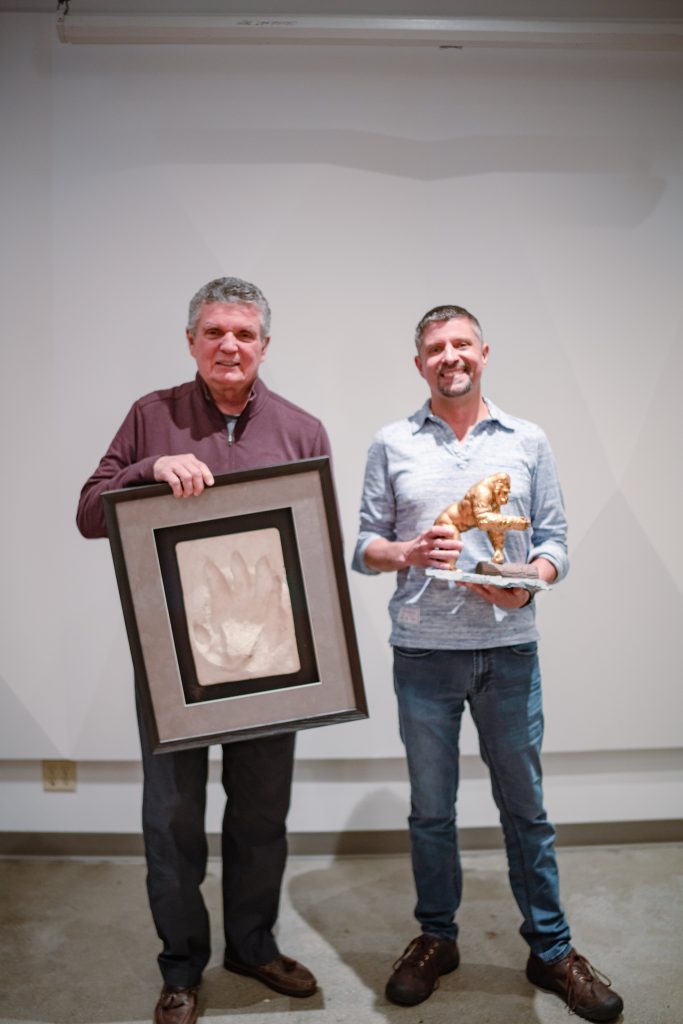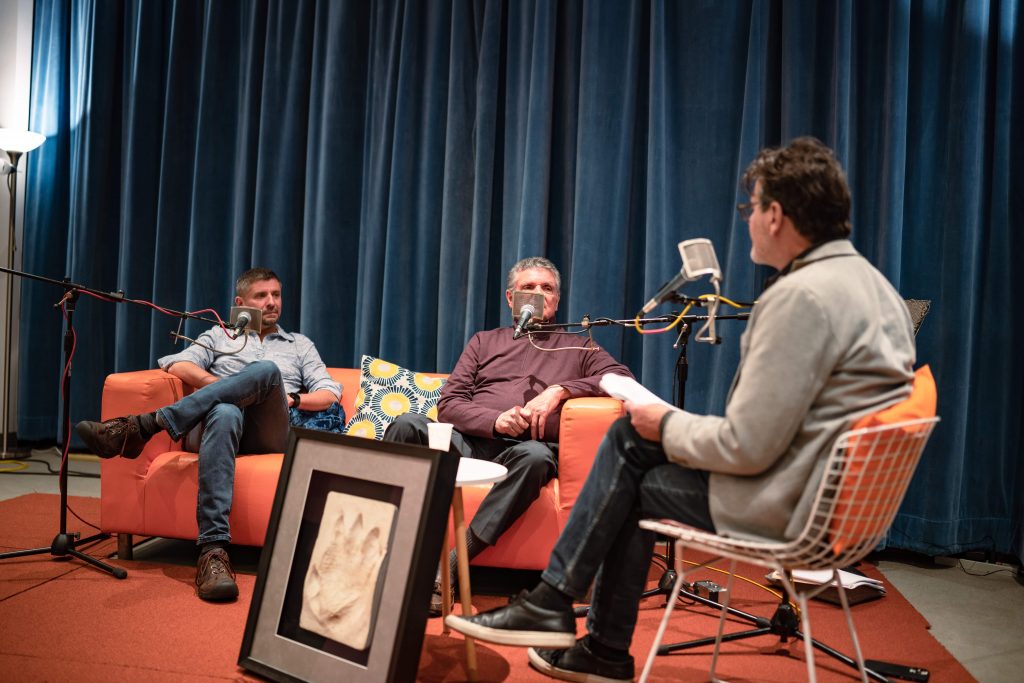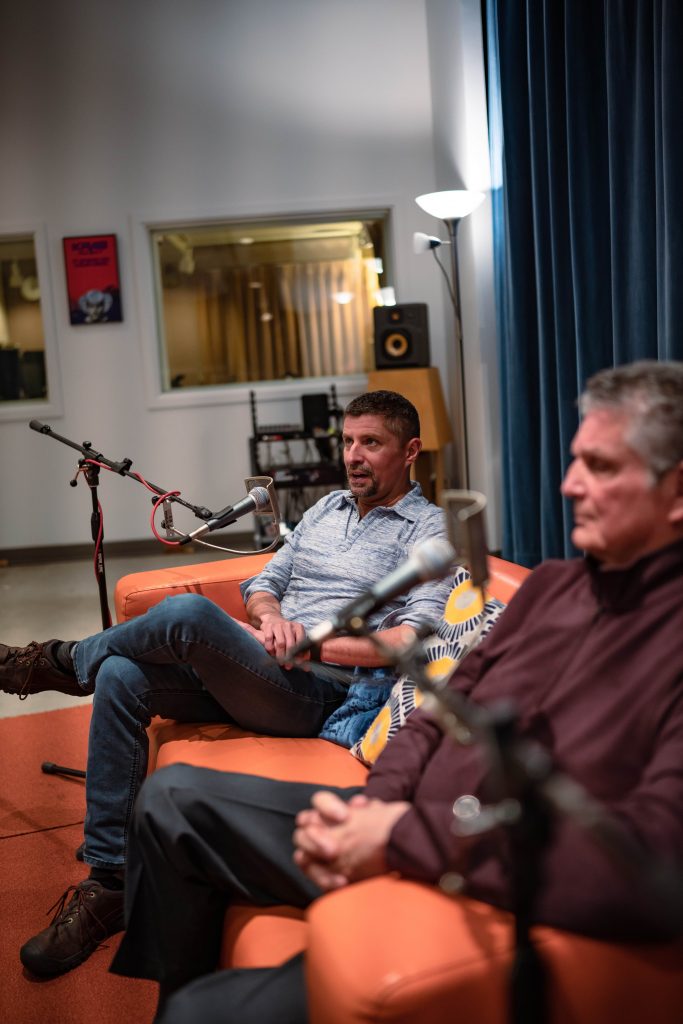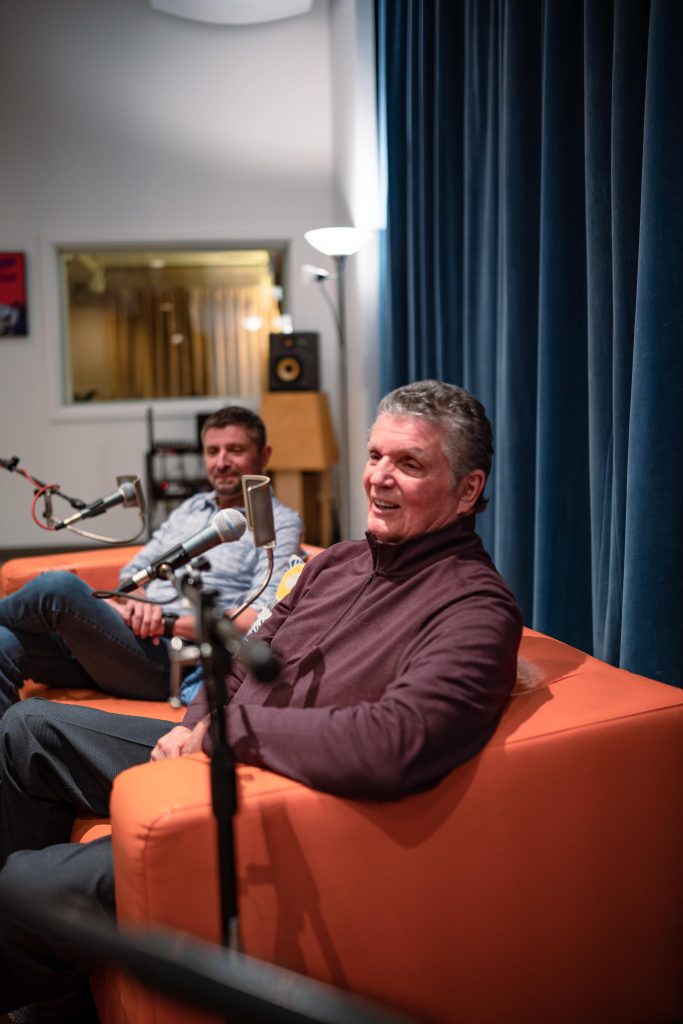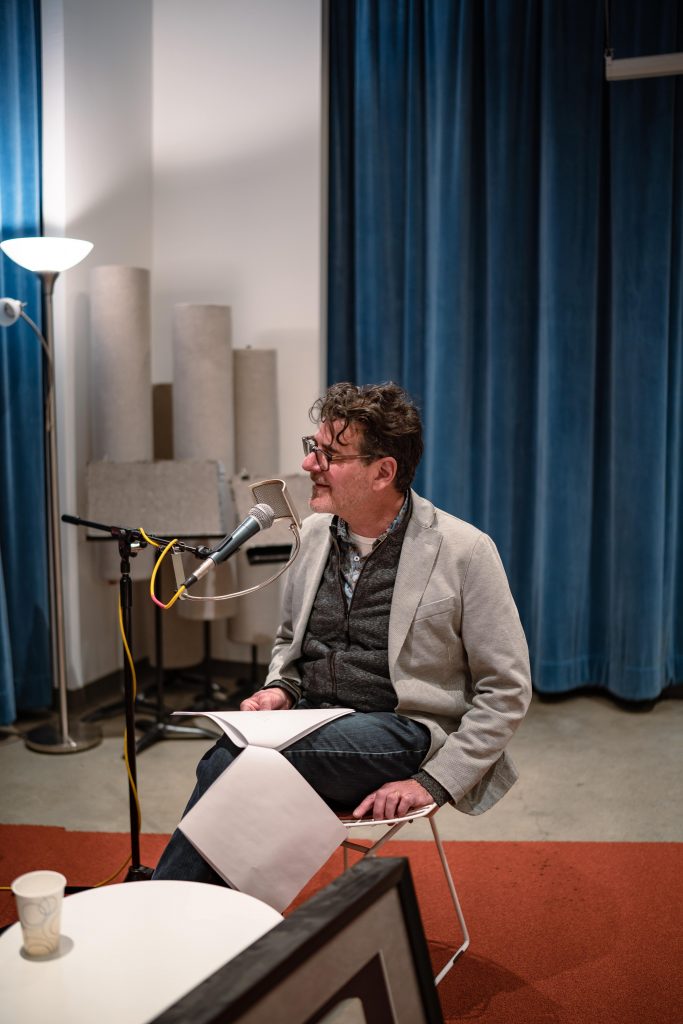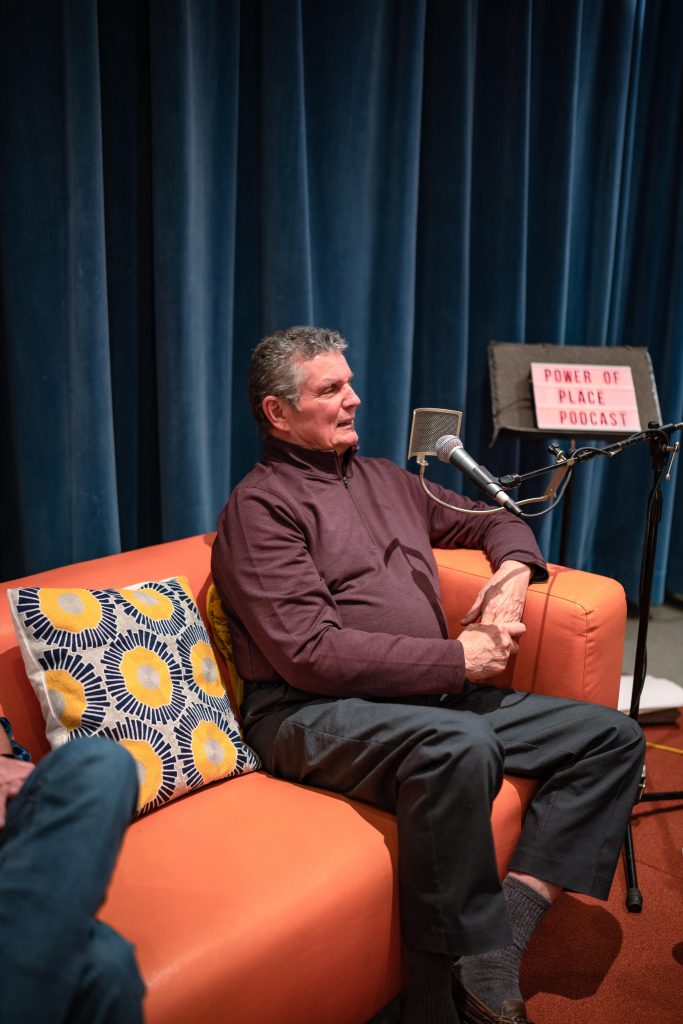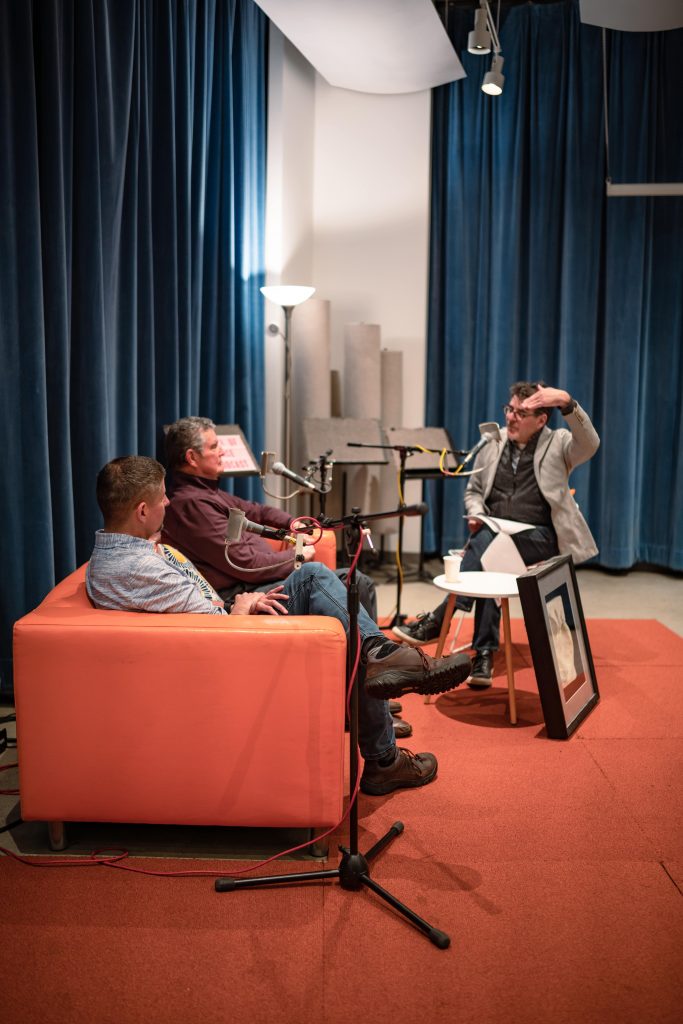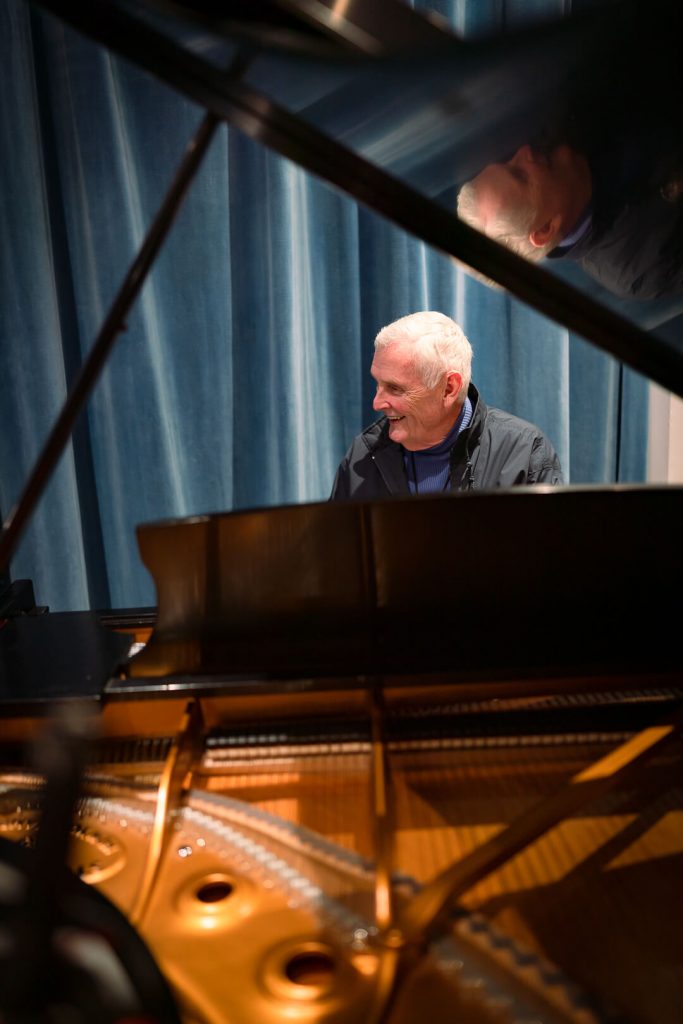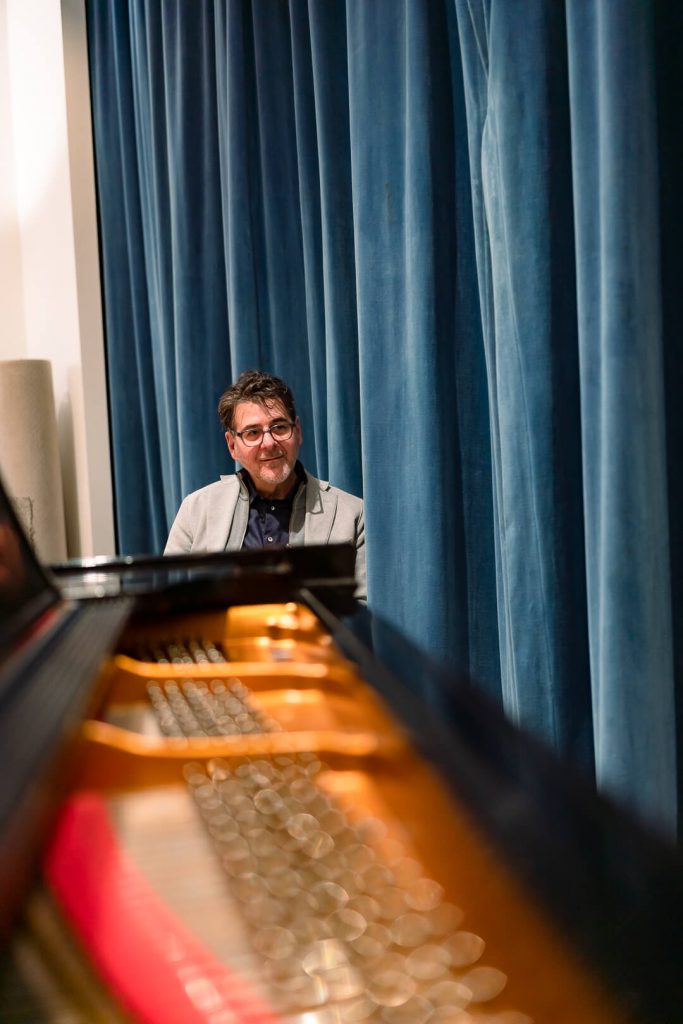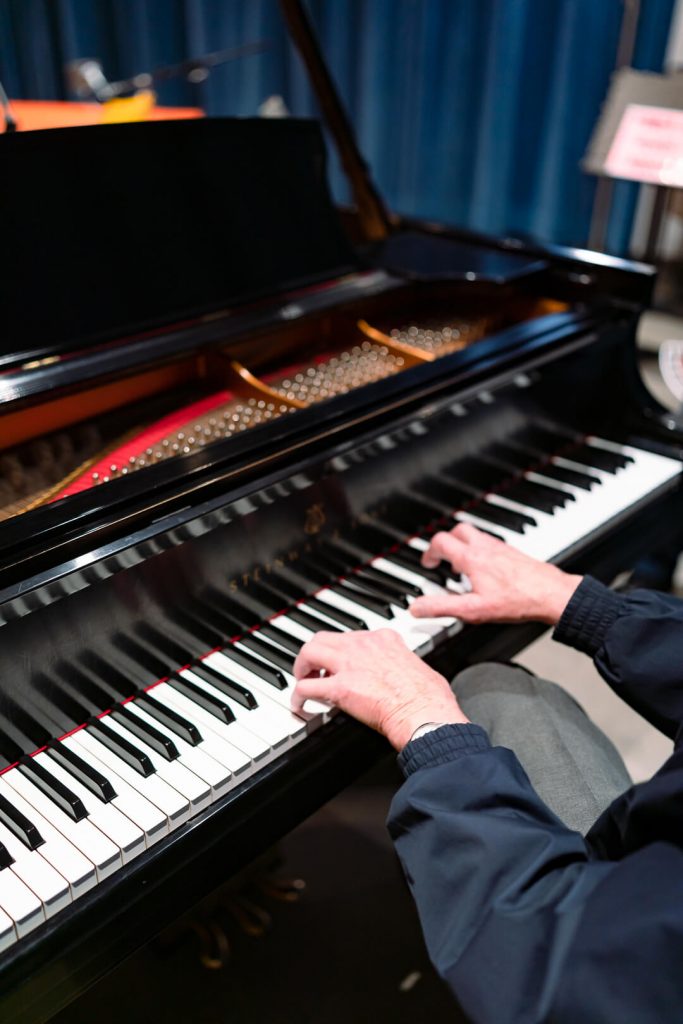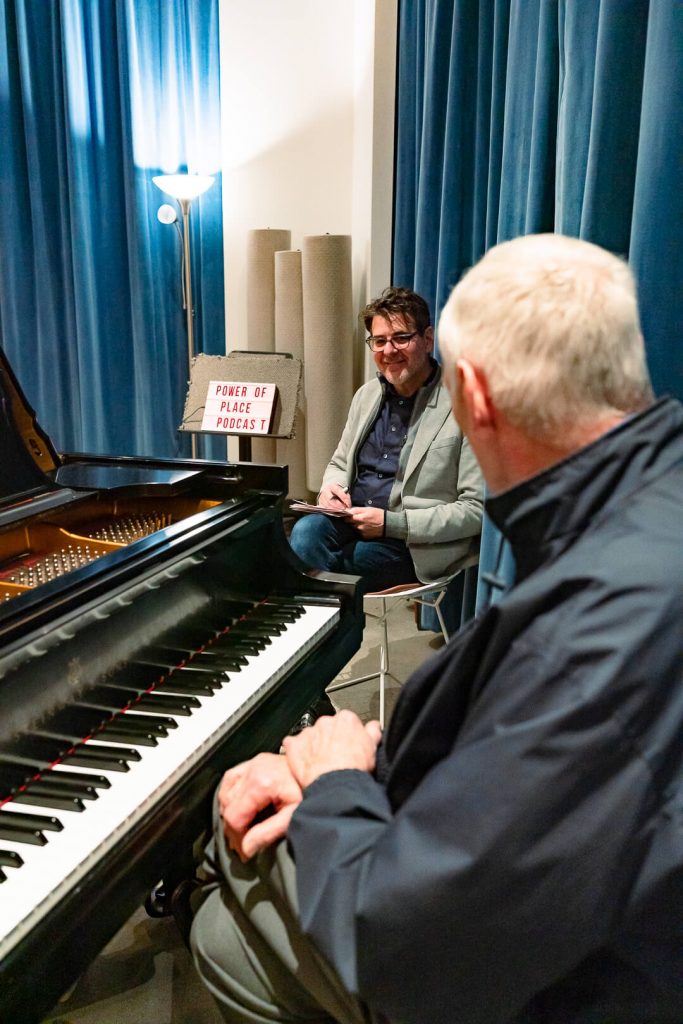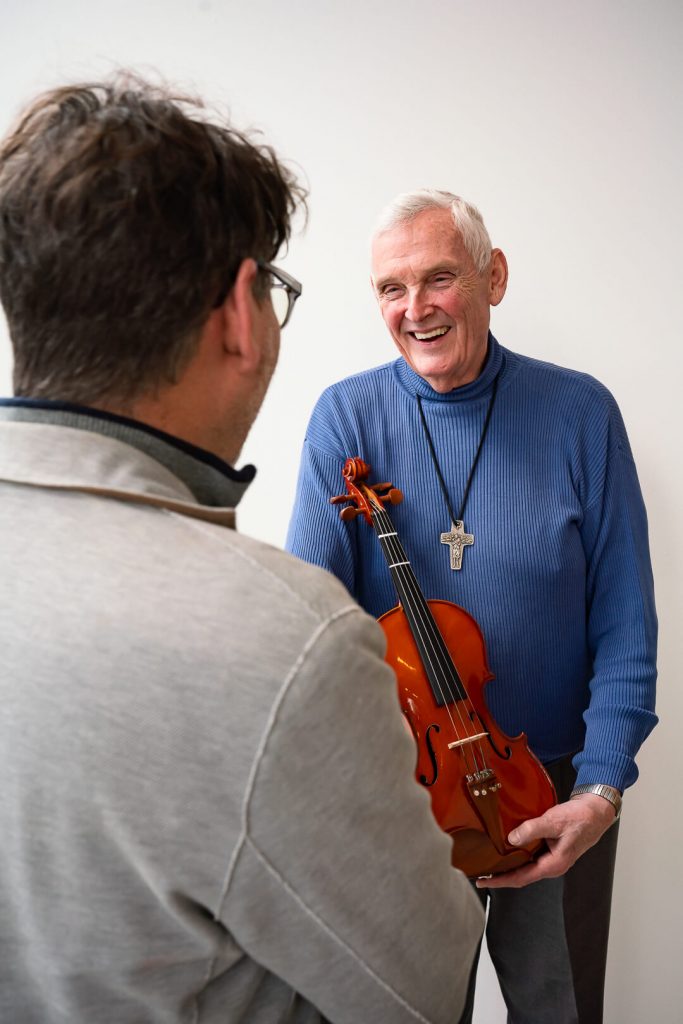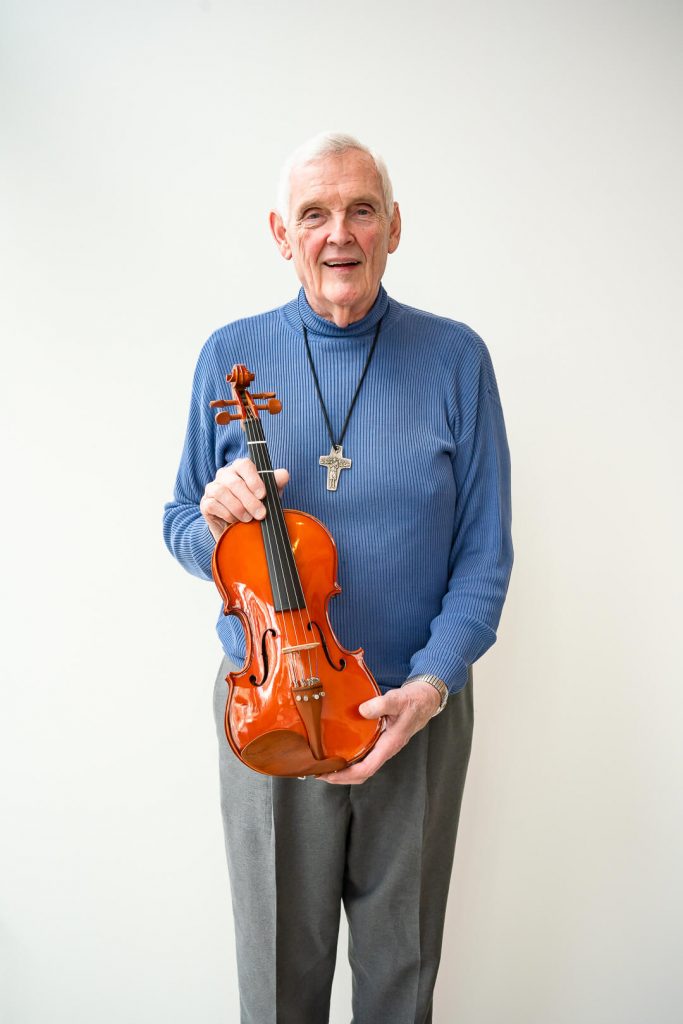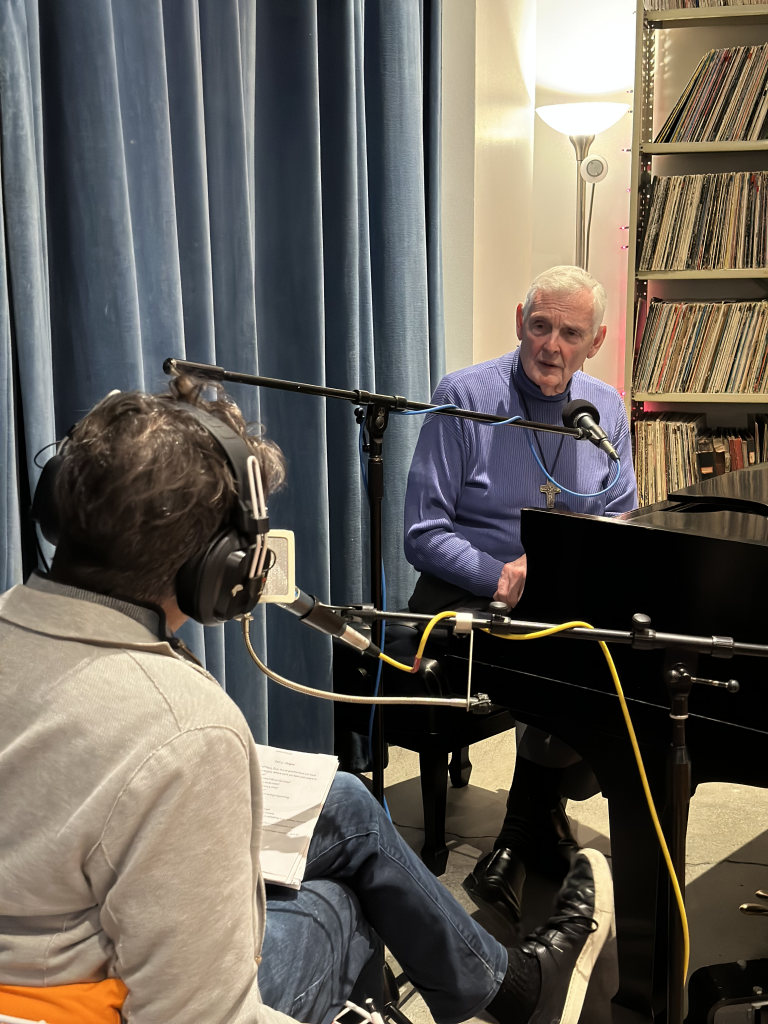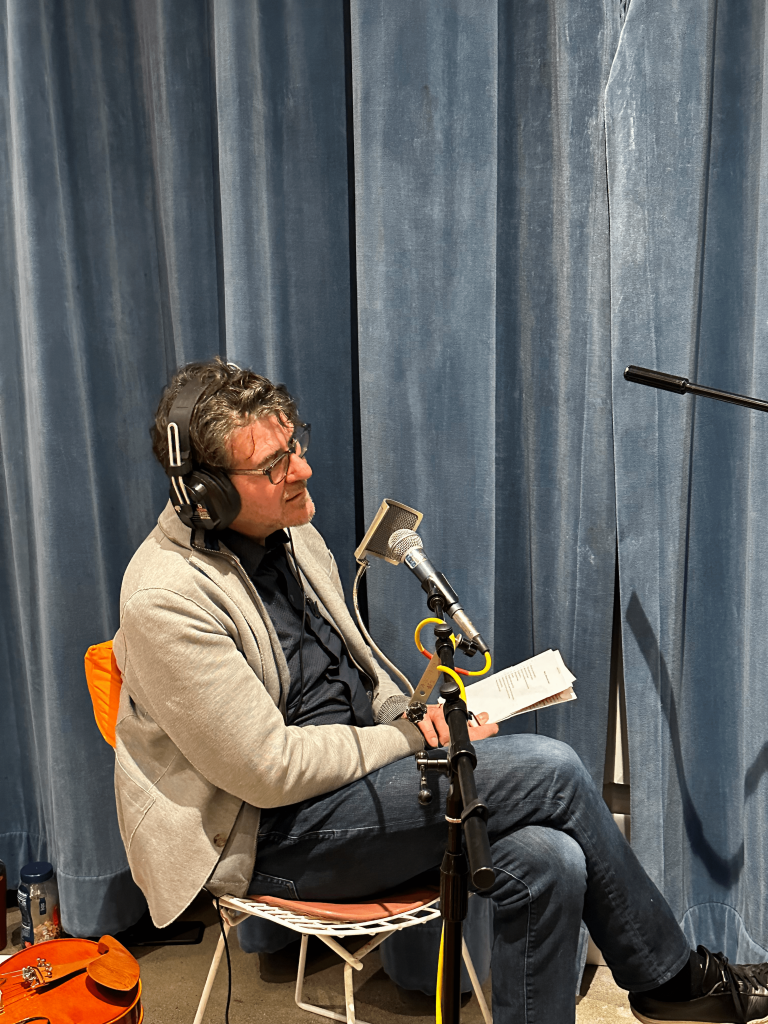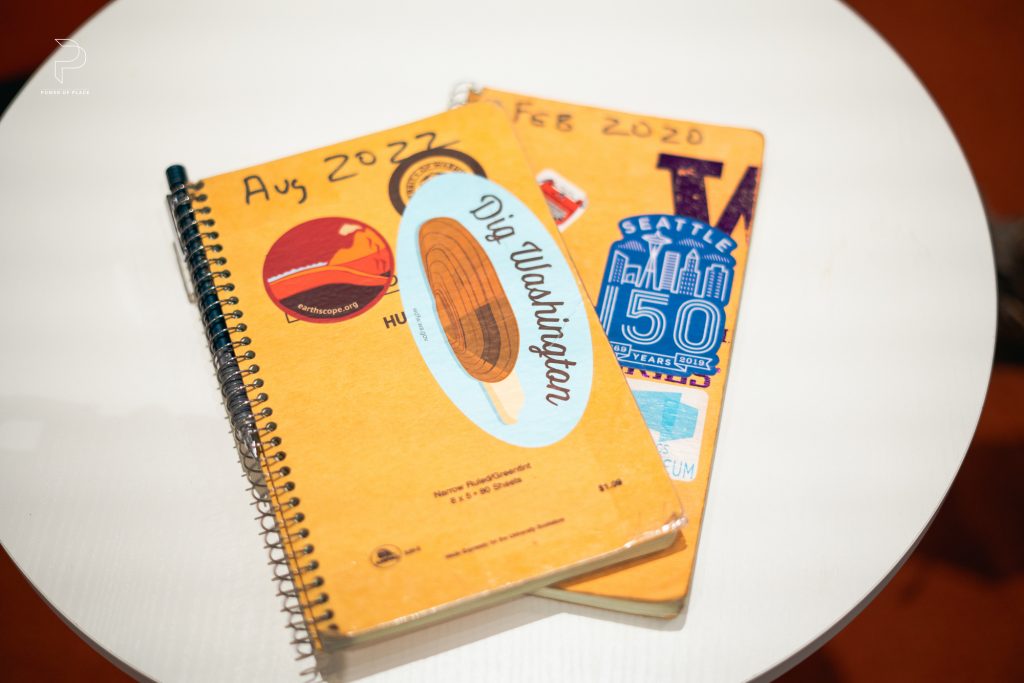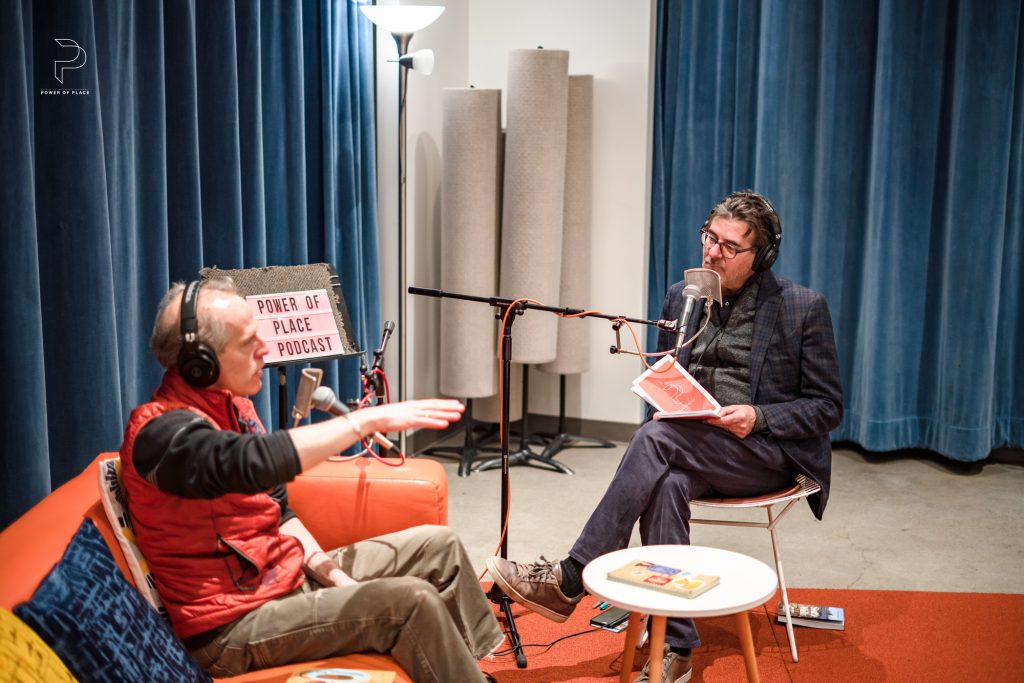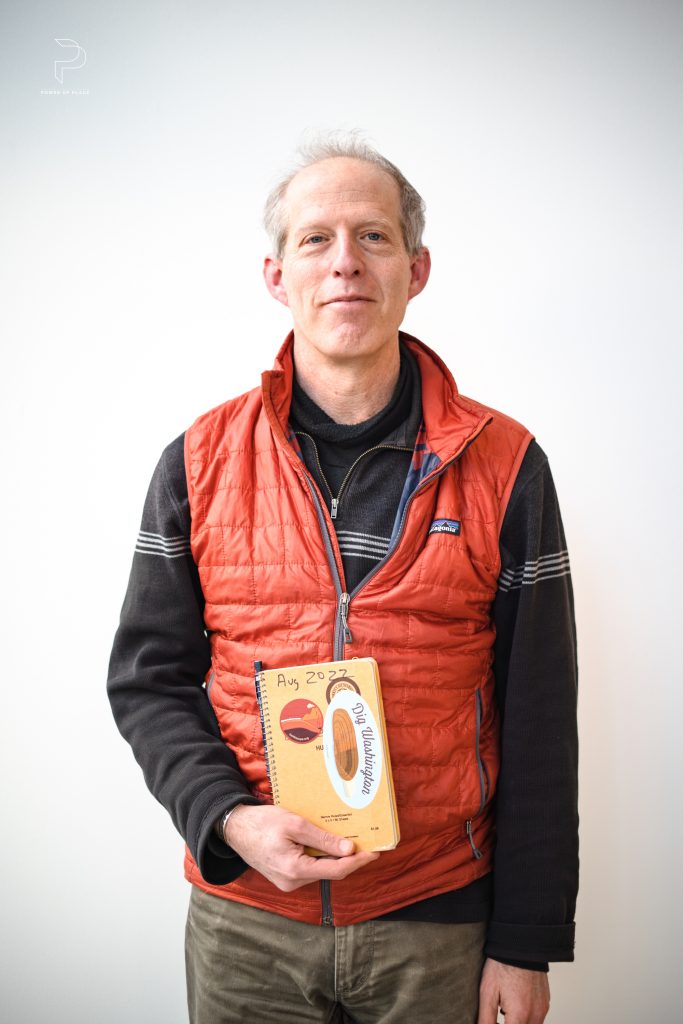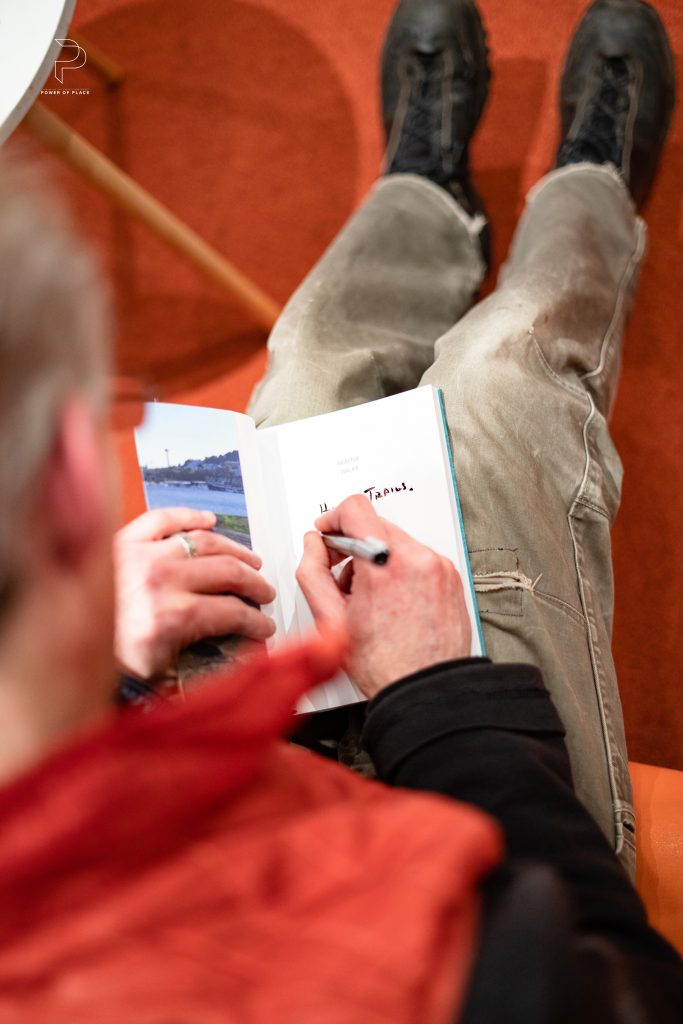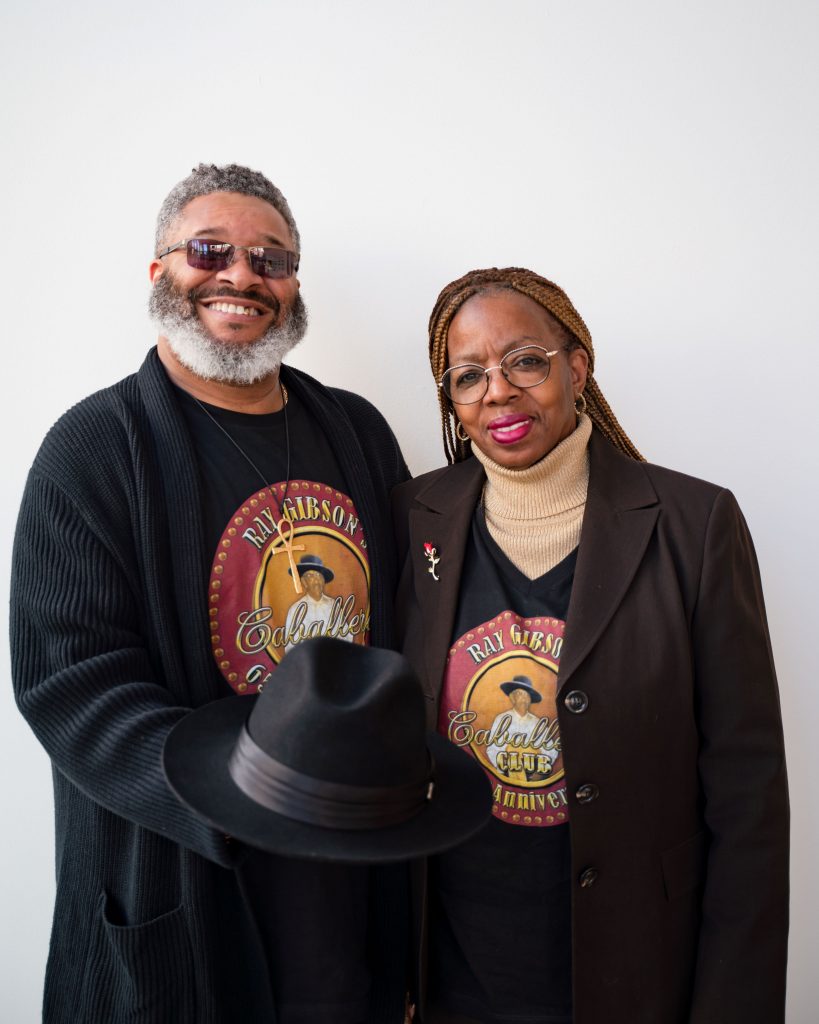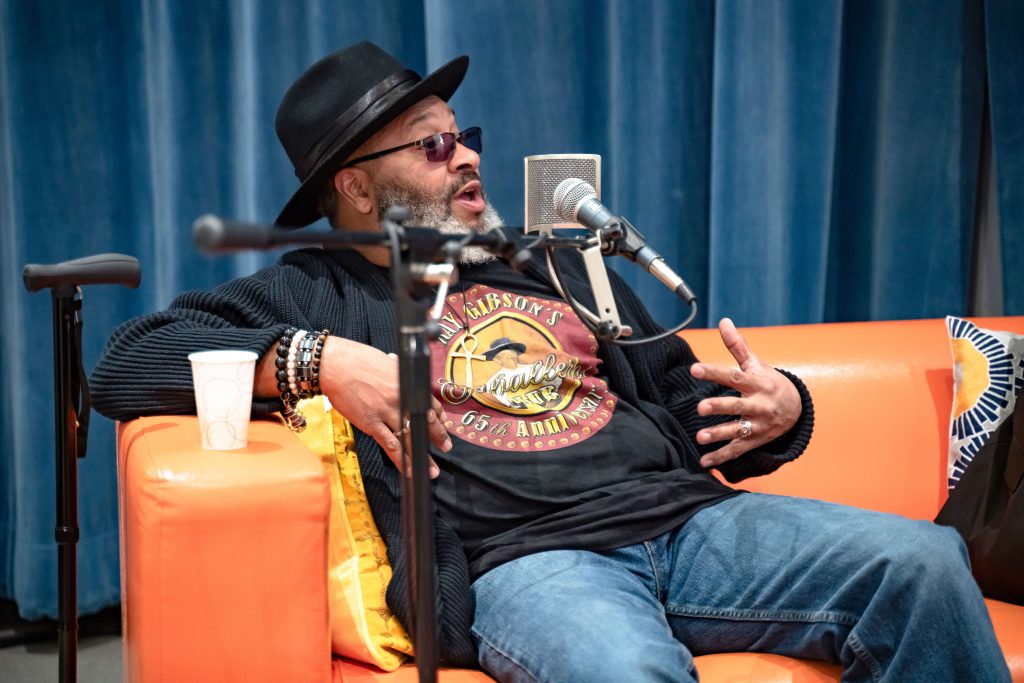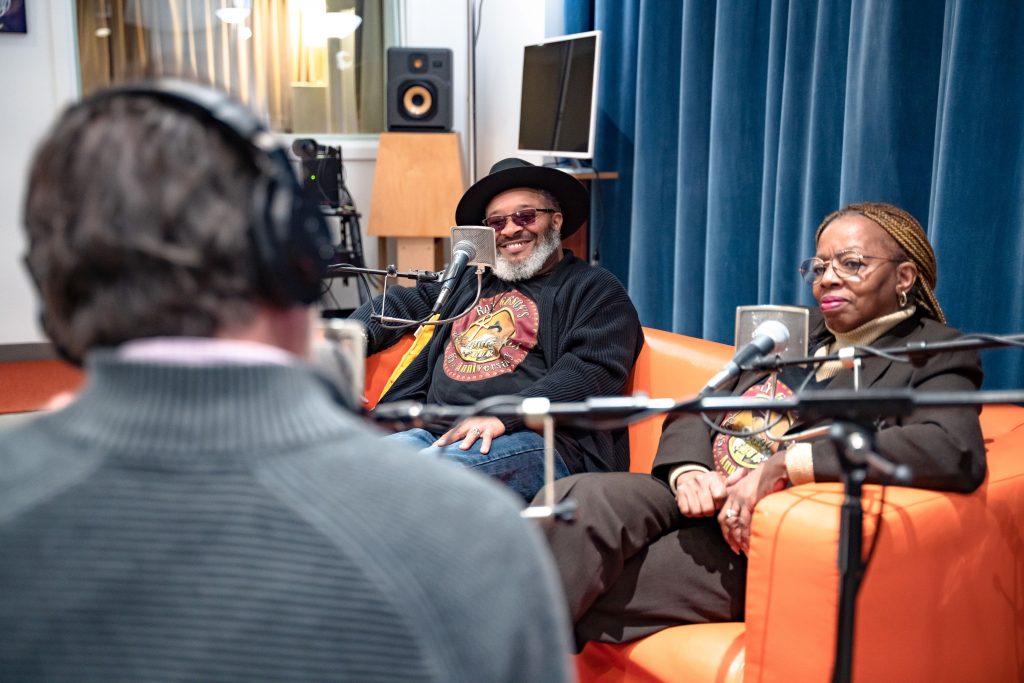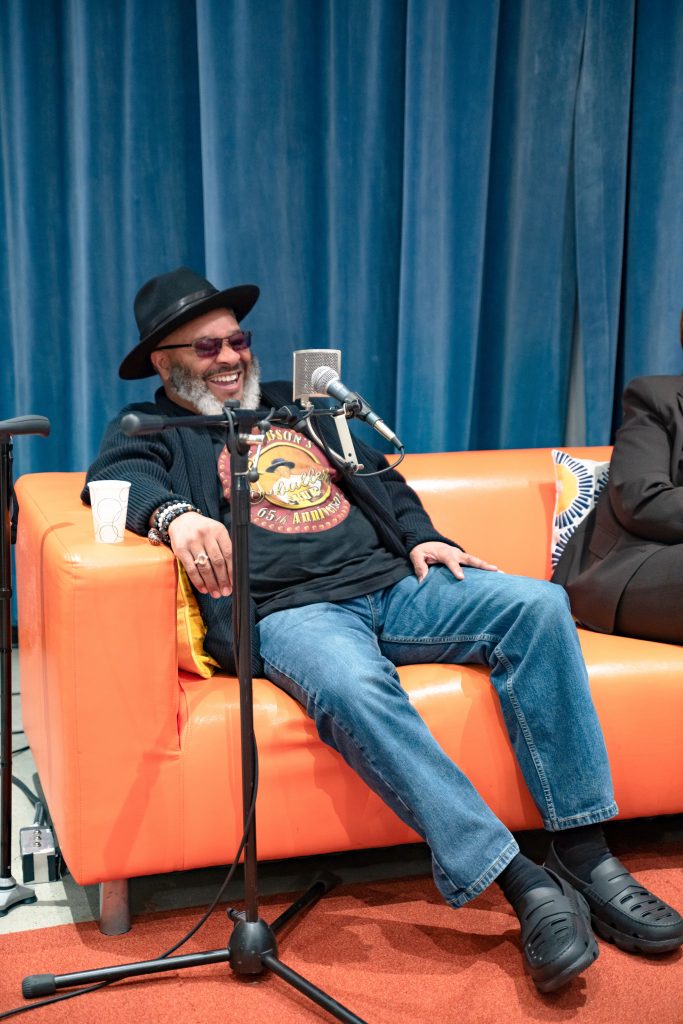Step into the multiverse of Zack Bolotin, owner-operator of Porchlight Coffee & Records on Seattle’s Capitol Hill. Not just a cafe, Porchlight is a platform for Zack’s varied talents, including graphic design, photography, art curation, book publishing and online retailing. It’s also a record label.
Listen as Zack describes how his endeavors, admittedly wide-ranging, are anchored in his family's history and an affection for old things. He shares how he incorporated his parents' memorabilia collection into Porchlight's publication "62 Souvenirs: Keepsakes from the 1962 Seattle World's Fair." Zack also recounts his discovery of mid-century architectural photography by Art Hupy published in “Pacific Architect & Builder,” a defunct trade journal produced by Zack’s grandfather Roscoe Laing. Reminiscent to Zack of Julius Shulman's contemporaneous work in Southern California, he restored and published a selection of Hupy’s photos as "Art Hupy: Architecture and Life in the Pacific Northwest" in collaboration with Docomomo US/WEWA.
Accompanying Zack’s inspiring stories are songs from an assortment of Porchlight Records' labelmates, among them his collaborative project, Pretty Old, whose tracks blend ruminations on remote motels, fictions by Raymond Carver and memories of roadside attractions.
A self-taught entrepreneur, Zack chose to keep his business small, sustainable and anchored in community. His maverick spirit—casual, classically Pacific Northwest—affirms that a livelihood can be both purposeful and expansive. These lighthearted stories uphold Zack’s city as a place of goodness.
"As much as a city is made by people; it’s made by the buildings and businesses that come and go as well; you can’t advocate for every single building to stay where it is. You have to pick and choose. There’s a balance between preservation and new buildings. That’s how it always has been.” - Zack Bolotin
Subscribe on Spotify↗︎, Apple Podcasts↗︎, SoundCloud↗︎, Audible↗︎
- Host: Edward Krigsman
- Guest: Zack Bolotin
- Sound Engineering: Daniel Gunther
- Photography: Travis Lawton
- Administration: Mary Mansour
- Series music: Theme by Tomo Nakayama as performed Grand Hallway; Additional music by Andrew Weathers.
- Episode music: Cataldo, Danielle Fricke, Tenderfoot, Time Pieces and Pretty Old (songs written and performed by Zack Bolotin, with Annie Truscott, Tomo Nakayama, Jason Clackley and Meredith Lampe).
This episode is dedicated to Bryan Ford, enthusiast of mid-century architecture, and to the advocacy of Susan Boyle and Eugenia Woo.
Click into your bindings as we launch from the highest peaks of the North Cascades with ski mountaineering historian Lowell Skoog, author of Written in the Snows: Across Time on Skis in the Pacific Northwest, published by Mountaineers Books and 2022 winner of the National Outdoor Book Award (NOBA) for historical writing.
Born to a family of Nordic ski jumpers, Lowell pioneered ski mountaineering routes across remote reaches of the Cascade and Olympic mountains. His stories abound in evocative details and introduce memorable characters like Wolf Bauer, Olga Bolstad, Hans Otto Giese and Milnor Roberts.
Chronicling the birth of Pacific Northwest skiing from a little-known sport of immigrants to cultural cornerstone, Lowell conveys the wonderment of Scandinavian settlers waking to Seattle’s first big snow in 1916; the camaraderie enjoyed by founders of early Pacific Northwest ski clubs; and the chaos of the 1934 Silver Skis race. His characters range from backwoods trappers to the heroic fighters of the United States Army’s 10th Mountain Division—some of whom would later develop North America’s postwar ski industry.
Amidst our current backdrop of climate change, Lowell’s snowy memoirs—portrayals of sanctuary and loss—are also a poignant record of a threatened pastime.
"Being up in the mountains and having that connection with the natural world…is really healthy. It can help you forget about short term concerns; you are in a place that’s been there forever…and will be there forever.” - Lowell Skoog
Host: Edward Krigsman
Guest: Lowell Skoog
Engineering: Daniel Gunther
Photography: Travis Lawton
Administration: Mary Mansour
Music: Theme by Tomo Nakayama as performed Grand Hallway; Additional music by Andrew Weathers and by Ryan Love as performed by Fox Hunt. “Ninety Pounds of Rucksack” performed by the 10th Mountain Division Army Band.
Archival Audio: “Charles and Marion Hessey films, circa 1939-1971,” University of Washington Department of Special Collections; The Mountaineers Archives.
Special thanks to Trevor Kostanich and Rob Frishholz for guidance with this episode, which is dedicated to the memory of Carl Skoog, Stephanie Subak and to the others in Lowell’s circle lost while traversing the mountains they loved.
Swing into the B & I Circus Store circa 1964 with guest Larry Johnston, who at age 13 became brother to a western lowland gorilla named Ivan—-the ape that became as emblematic of the Pacific Northwest as the legendary Sasquatch.
Larry narrates the tale of how his parents came to own the B & I pet store, thanks to Orca capturer Ted Griffin. He warmly remembers the store’s ever-changing menagerie, which included gibbons, jaguars, lions, seals, an elephant, exotic fish and even Amazonian parrots. Most poignantly, he shares stories of growing up with the young Ivan.
Join Larry on a journey that takes you from Hollywood movie sets to an unexpected encounter involving one of America’s most esteemed civil rights figures. Fast forward to today, where students from the Seattle Jewish Community School share questions from their reading of The One and Only Ivan by Katherine Applegate.
Adding to our list of notable voices, Jodi Carrigan, the Curator of Primates at Zoo Atlanta, reflects on her relationship with Ivan in his later years. Rounding off our tale, Earl Borgert, grandson of B & I's founder Earl Irwin, presents the I.V.A.N. Foundation, dedicated to preserving wildlife habitats.
(To hear additional stories of the B & I Circus Store, tune in to Episode #40, “The Wizard of Earl," for a conversation with Ron Irwin, who ran the store for decades following the passing of his father, store founder Earl Irwin).
"He was…unique in so many ways. He loved to engage people. Ivan just relished making connection.” - Larry Johnston
Dive into the second episode of this two-part series as we continue our conversation with graphic designer, Art Chantry, whose stories sparkle as vibrantly as his colorful posters, offering original insights from Seattle’s grunge era.
These tales span Art’s diverse interests and influences: The allure of archaeology; Dadaism & Surrealism; old commercial art by overlooked masters, accidental inking errors. Chantry exposes the misguided muddling of fine art with graphic design and then explains how graphic design underscores propaganda and politics.
Art concludes by heralding a new book showcasing Estrus Records, home of bands like The Makers, Mono Men and The Mummies. He confesses that his posters and album covers for these bands were his most liberated. So, this publication is a faithful retrospective for a maverick homegrown genius whose impact is international.
"You are standing next to this pond that suddenly emerges and you throw a pebble into the water and this ripple would start. And it got bigger...and before you know, it's a tidal wave; then you hit the shoreline and it's a tsunami and it wipes out half of America; and it's like: 'Wow...I did that....' We were close enough where we could do things like that and actually watch it happen!” - Art Chantry
Join us in this episode (the first of a two-part series) for a conversation with graphic designer Art Chantry, a national treasure, whose posters are collected by The Smithsonian and The Louvre.Opening with childhood memories of Parkland on the fringes of Tacoma, Washington, Art describes a restless educational path that eventually brought him to Bellingham. He shares experiences of his subsequent arrival to Seattle in the 1980’s, including street observations that shaped his aesthetics. He tells of art directing the music biweekly magazine The Rocket on a shoestring budget before launching a one-man graphic design firm, churning out hundreds of posters, logos and album covers for rock bands including Soundgarden and Mudhoney associated with Sub Pop, Estrus and other home-grown record labels.Art’s stories reveal the genesis of a vital visual lexicon—subversive, populist and modern—that simultaneously reflected and transformed the Pacific Northwest: From a backwater for “losers,” to the forefront of global popular culture in the 1990’s and beyond.
"It’s black and white. It's scrappy. There’s not a straight line on the whole goddamn thing. It looks like it was cut and pasted together out of chunks of Xerox junk. It is just an atrocious mess. And it’s beautiful…. It’s so alive—You still look at it and it makes your heart jump!” - Art Chantry
Join us in this episode as we descend into the Graveyard of the Pacific with Matt McCauley, President of The Northwest Shipwreck Alliance and Sarah Haberstroh, Manager of Underwater Operations for Rockfish Inc.
Matt’s passion for deep-water marine salvage is intertwined with that of his friend Jeff Hummel. As scuba diving high schoolers on Mercer Island in the early 1980s, the two made headlines recovering World War II aircraft from the bottom of Lake Washington. In 2010 Matt returned from the East Coast to support Jeff’s lifelong quest to find the SS Pacific, a nearly 300-ft long transatlantic sidewheel steamer that sunk off Cape Flattery in 1875. At the time it was laden with gold from the Cassiar Mining District of NW British Columbia, near Alaska. The shipwreck drowned all but two of those onboard, which may have totaled as many as 500.
Sarah Haberstroh left a career in underwater warfare in the United States Navy last year to join the team searching for the SS Pacific. She maneuvers Rockfish’s remotely operated vehicles for the current recovery phase of the operation.
Matt and Sarah recount the ill-fated ship’s history. They talk of the bootstrapped technology, the gumshoe detective work and the perseverance required to locate it in its resting place 1,000 feet beneath the sea. Animating their endeavor—and today’s conversation—is a mission of recovering a complete collection of the vessel’s artifacts: Relics honoring those who died in the calamity.
"This tells a story. It is very rare that you can find a vessel from which you can extract all these artifacts and essentially have a time capsule from 1875." – Matt McCauley
Join us in this episode (the first of a two-part series) for stories of the B & I Circus Store, founded by Earl Irwin in 1945 in Lakewood, WA. Our guest today is Earl Irwin’s son, Ron Irwin, who ran the store for decades following his father’s passing. Ron is joined by Earl Borgert, the founder’s grandson, family archivist and President of The I.V.A.N. Foundation.
What began as a military surplus outlet housed in an unassuming 500 SF cinderblock storeroom became a prototype for the postwar American shopping mall, eventually expanding to over 300,000 SF. Under Irwin’s exuberant and tireless leadership, the B & I drew multitudes by transforming the store into a destination for extraordinary adventures.
Recently discovered reel-to-reel recordings allow us to enjoy Earl Irwin’s own voice for the first time since his death in the 70’s. Woven into this audio tapestry are voices of Power of Place listeners—all of whom visited the B & I as children—recalling endless hours of reverie: Whirling on a carousel, collecting autographs from their best-loved sports and movie heroes; and discovering a revolving menagerie, including the store’s resident lowland gorilla, Ivan.
Join us in this episode for a radiant musical memoir by pianist Dick Coolen.
Long before the city’s reputation as an international tech hub, Seattle achieved a globally relevant jazz culture. Here, bands who gathered in the basements of churches, modest homes, and schools…produced the likes of Ray Charles, Ernestine Anderson, and Quincy Jones. Reared in this milieu, our guest’s stories celebrate a free-range childhood in Seattle’s redlined Central District and the big band, bebop, and early rock and roll rhythms that filled its avenues.
Dick recounts jamming at Joe Brazil’s Black Academy of Music; of blowing baritone sax at Birdland on Madison. He savors memories of touring with Ike Cole and of collaborating with Dizzy Gillespie; of backing underground drag shows with showtunes; and of visits to a well-regarded violin maker at the Fisher Studios Building. Over the course of his jazz journey which eventually brought him to Port Orchard, Dick footed the family bills by working no fewer than 44 non-musical occupations—from paperboy to firefighter to brick mason.
Dick Coolen’s humility and commitment—qualities he attributes to his working class and Roman Catholic upbringing—offer lessons from an inspired life grounded in community and refined through the life-giving power of music.
This episode is dedicated to the memory of Jamie Winshall and to the continued success of his son Daniel.
Here is Dick & Edward recording in the studio at Jack Straw Cultural Center, January 2023:
Join us in this episode for the field trip of a century. Our guest, geologist-historian David B. Williams, illuminates the Pacific Northwest’s characteristic highlands and waterways as landscapes of perpetual transformation.
With a wry wink, this raconteur’s stories fuse the sensitivity of a naturalist with the diligence of a research geek. Amble through Seattle with David as he reveals his city’s subterranean secrets: A mosquito fleet schooner lost somewhere below downtown’s streets; old growth forests immersed under Lake Union; an art deco office tower whose foundation stones invite us to touch “deep time”—almost unimaginably greater than the time scale of human lives and human plans we hold so dear.
David’s tales animate the experiences of early Seattleites who swung picks and shot water cannons to forcefully reshape our glacially-formed landscape into a modern metropolis; a progression that continues today in response to climate change.
"I’m interested in connections…How are we influenced by the landscape around us? And then, it’s the connections between people and place." - David B. Williams
Here is David & Edward recording in the studio at Jack Straw Cultural Center, December 2022:
Join us in this episode and step inside the Ray Gibson Caballeros Club with Tim Person (President & CEO) and Ms. Ellen Smith (Manager).
In the 1950’s, two trailblazing African American men grew weary of exclusion from downtown Tacoma’s restaurants, concert halls and bars. They envisioned a member-owned, private club for the city’s Black community. A founders group next acquired real estate for this purpose in the form of an inconspicuous house on a dead-end street in Tacoma’s Hilltop neighborhood on acreage heralding sweeping views of Mount Rainier. About twenty benefactors soon mortgaged their private residences to fund expansion of that building into the Caballeros Club as we know it today; with splendid spaces supporting diversified membership that includes women.
If the “Cab’s” walls could speak, they would voice this episode’s heartwarming stories: Tales of dedicated civic leaders rubbing elbows at the downstairs bar for decades, of friends swaying to live music, of earnest charitable projects, of hearty food served with piquant cocktails…within a private Pacific Northwest haven abounding in joy and camaraderie.
"One of the things that makes us proud…is that it is our club—we are not renting the property. We’ve purchased it. So, it has the feeling of ownership; you are not going to take this away from us. This is ours.” - Ms. Ellen Smith
Here are Tim, Ellen, & Edward recording in the studio at Jack Straw Cultural Center, November 2022:



